Day 1 :
Keynote Forum
H C Yee
NASA Ames Research Center, USA
Keynote: Recent developments in accuracy and stability improvement of nonlinear filter methods for DNS and LES of compressible flows
Time : 09:35-10:15

Biography:
H C Yee (NASA Ames Research Center) has over 30 years of fundamental research experience in the fields of Computational Physics, Computational Fluid Dynamics (CFD) and Nonlinear Dynamics. She is well known in numerical algorithm development in high-resolution shock-capturing method and low dissipative high order methods for high speed shock/turbulence/combustion interactions for gas dynamics and MHD systems. She has also worked extensively in the area of ``Dynamics of Numerics for Computational Physics'' which has important implications on the interpretation and reliability of complex nonlinear numerical simulations in general and on the numerical prediction of flow transition by DNS in particular. Her numerical methods have been incorporated into many production CFD codes both domestically and internationally for applications in aerodynamics, astrophysics, and fluid/plasma dynamics.
Abstract:
Recent progress in the improvement of numerical stability and accuracy of the Yee & Sjogreen (JCP-2007) high order nonlinear filter schemes is described. The Yee & Sjogreen adaptive nonlinear filter method consists of a high order non-dissipative spatial base scheme and a nonlinear filter step. The nonlinear filter step consists of a flow sensor and the dissipative portion of a high resolution nonlinear high order shock-capturing method to guide the application of the shock-capturing dissipation where needed. The nonlinear filter idea was first initiated by Yee et al. using an artificial compression method (ACM) of Harten as the flow sensor. The nonlinear filter step was developed to replace high order linear filters so that the same scheme can be used for long time integration of direct numerical simulations (DNS) and large eddy simulations (LES) for both shock-free turbulence and turbulence-shock waves interactions. The improvement includes four major new developments: (a) Smart flow sensors were developed to replace the global ACM flow sensor. The smart flow sensor provides the locations and the estimated strength of the necessary numerical dissipation needed at these locations and leaves the rest of the flow field free of shock-capturing dissipation. (b) Skew-symmetric splittings were developed for compressible gas dynamics and magnetohydrodynamics (MHD) equations to improve numerical stability for long time integration. (c) High order entropy stable numerical fluxes were developed as the spatial base schemes for both the compressible gas dynamics and MHD. (d) Several dispersion relation-preserving (DRP) central spatial schemes were included as spatial base schemes in the framework of our nonlinear filter method approach. With these new scheme constructions, the nonlinear filter schemes are applicable for a wider class of accurate and stable DNS and LES applications, including forced turbulence simulations where the time evolution of flows might start with low speed shock-free turbulence and develop into supersonic speeds with shocks. Representative test cases for both smooth flows and problems containing discontinuities for compressible flows are included.
Recent Publications
1. Yee H C and Sjogreen B (2007) Development of low dissipative high order filter schemes for multiscale Navier-Stokes MHD systems. Journal of Computational Physics 225(1):910-934.
2. Yee H C, Kotov D V, Wang W and Shu C W (2013) Spurious behavior of shock-capturing methods by the fractional step approach: problems containing stiff source terms & discontinuities. Journal of Computational Physics 241:266-291.
3. Kotov D V, Yee H C, Wray A A, Sjogreen B and Kritsuk A G (2016) Numerical dissipation control in high order shock-capturing schemes for LES of low speed flows. Journal of Computational Physics 307: 189–202.
- Fluid Dynamics | Microfluidics | Numerical Methods | Magneto Hydrodynamics | Heat Transfer System

Chair
Faik Hamad
Teesside University, UK

Co-Chair
Tomoaki Kunugi
Kyoto University, Japan
Session Introduction
Faik Hamad
Teesside University, UK
Title: The liquid-liquid and gas-liquid two-phase flow studies with and without heat transfer
Time : 11:45-12:05

Biography:
Faik Hamad has completed his PhD from Bradford University, UK. He worked 4 years as Researcher and Teaching Fellow at Aberdeen University before he joined Teesside University as Senior Lecturer in 2011. He has published more than 30 papers in reputed journals and has been serving as Reviewer for a number of journals. His publications and expertise are in multiphase flow, renewable energy and heat transfer areas. He has won two grants to extend his research recently to new areas of microbubble generation and flow in porous media and microchannel.
Abstract:
The dispersion of bubble/drops in liquid plays a vital role in many physical and chemical processes as the momentum, mass and energy transfer are largely controlled by the available interfacial area between the phases. The distribution of volume fraction and interfacial area concentration in a two-phase flow are influenced by bubble/drop size. The presence of bubbles/drops affects the turbulence intensity in comparison to the single-phase flow. The drops breakage and coalescence are related to turbulence activities. The interactions between these various parameters contribute to the development of the flow behavior in the vertical pipe under investigation. The results on development of liquid-liquid (kerosene-water) up-flow in a vertical pipe of 77.8 mm inner diameter and 4.5 m length downstream of a 90o bend using optical and hot-film anemometry will be presented. The data have been collected at L/D ratios of 1, 16, 38 and 54 to investigate: The effect of bent on flow development in the pipe, the effect of volumetric quality and mixture velocity on flow parameters under fully developed condition at L/D=54, the effect of pipe inclination on various variables will discussed and the effect of introducing kerosene drops on two-phase flow turbulence will be discussed. The speech will also address the following work on gas-liquid multiphase flow: 1. The effect of the volumetric quality and mixture velocity on pressure drop of gas-liquid flow in horizontal pipes of different diameters are investigated experimentally, 2. The multiphase flow of air-oil droplet in porous media was studied to understand the pressure drop and filters performance, 3. Analysis of single phase/two-flow pressure drop in a hydrophobic small channel environment and the following two work on effect of multiphase flow on heat transfer will be introduced: 1. Investigation of impingement heat transfer for air-sand mixture flow and 2. Heat transfer from a cylinder in cross-flow of single and multiphase flows.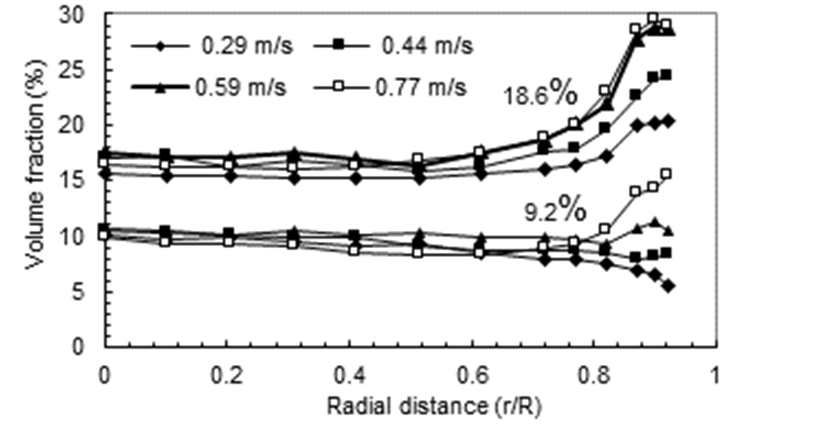
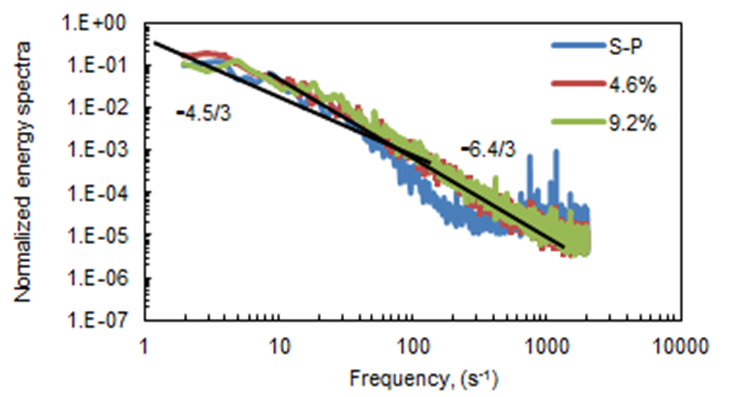
Recent Publications
1. F A Hamad and S He (2017) Heat transfer from a cylinder in cross-flow of single and multiphase flows. International Journal of Mechanical, Aerospace, Industrial, Mechatronic and Manufacturing Engineering 11(3):386-390.
2. Adnan A Abdul Rasool, Safaa S Ahmad and F A Hamad (2017) Effect of impeller type and rotational speed on flow behavior in fully baffled mixing tank., International journal of advanced research (IJAR), International Journal of Advanced Research 5(1):1195-1208.
3.F A Hamad, F Faraji, C G S Santim, N Basha and Z Ali (2017) Investigation of pressure drop in horizontal pipes with different diameter. International Journal of Multiphase Flow 91:120–129.
Maksim V Ustinov
TsAGI, Russia
Title: Generation of Tollmien-Schlichting waves by free-stream turbulence
Time : 12:05-12:25

Biography:
Maksim V Ustinov works in fields of theoretical and experimental investigations of laminar-turbulent transition and laminar flow control. He developed novel methods of description of non-linear stages of laminar-turbulent transition in the boundary layer on the straight and swept wing. He also published a series of works dealing with theoretical description of transition under enhanced turbulence level. He is an author of phenomenological model of force action and heat action of dielectric barrier discharge on the flow. Group under his leadership experimentally demonstrated delay of ‘‘natural” laminar-turbulent transition by DBD. He is an author of few novel methods of laminar flow control, such as flow acceleration by micro-jets and cross-flow velocity reduction by DBD and surface micro-relief. He also develops new amplitude methods of transition prediction taken into account level of free-stream perturbations and surface roughness.
Abstract:
Amplification of Tollmien-Schlichting (TS) waves excited by free-stream turbulence (FST) is a dominant mechanism of laminar-turbulent transition in a boundary layer on the airplane wing. Recently FST is usually considered as a superposition of vortices moving with flow velocity. Theory and experiment show that such vortices can generate TS waves by means with interaction with strong boundary layer non-uniformity near the leading edge. Because of strong attenuation of TS wave before the neutral point, this receptivity mechanism is too weak for explanation of experimental dependence of transition Reynolds number from FST level. Alternative approach to description of TS waves generation by FST is considered here. It is based on a treatment of turbulence as a superposition of vortices moving with speed deviated from flow velocity. Part of these vortices has period and frequency equal to these parameters of TS waves. They generate instability waves near the neutral point via resonant interaction or non-localized receptivity mechanism. Amplitude method of laminar-turbulent transition prediction based on this receptivity model and evaluation of TS waves growth from linear stability theory was developed. Dependences of r.m.s. velocity pulsations from the Reynolds number for the flat plate boundary layer computed in this way for different values of turbulence level Tu are plotted in Figure 1: (a). Transition Reynolds number as function of Tu found from these data using amplitude criterion u'=0.03u∞ is presented in Figure 1: (b). Computed dependence of transition Reynolds number from Tu well describes available experimental data. Linear dependence of the critical N factor on the logarithm of Tu known as Mack’s correlation is also validated theoretically. The analytically determined proportionality coefficient of this dependence 17/6 is similar in value to 2.4 obtained from the experimental data.

Recent Publications
1. M E Goldstein (1983) The evolution of Tollmien–Schlichting waves near the leading edge. Journal of Fluid Mechanics 127:59-81.
2. D A Fuciarelli, H L Reed and I Lyttle (2000) Direct numerical simulation of leading edge receptivity to sound. AIAA J 38(7):1159-65
3.Yu S Kachanov, V V Kozlov and V Ya Levchenko (1978) Occurrence of Tollmien–Schlichting waves in the boundary layer under the effect of external perturbations. Fluid Dynamics 13(5):704.
4.R G B Shubauer and H K Skramstad (1948) Laminar boundary layer oscillations and transition on a flat plate. NACA Annual Report 34:327-357.
Tomoaki Kunugi
Kyoto University, Japan
Title: Wavy interface behavior and droplet entrainment of annular two-phase flow in rod-bundle geometry with spacers
Time : 12:25-12:45

Biography:
Abstract:
Measurements have been conducted to simultaneously consider both liquid films and droplets of the annular flow on a 3X3 simulating BWR (Boiling light water reactor) fuel rod-bundle test-section with spacers as shown in Fig.1. The optical system of a highspeed camera and a tele-microscope was used to record the backlight images at the gap between a corner rod and a side rod of the bundle at high time and space resolutions. The data at high time and space resolutions provided the detailed descriptions of the gas-liquid interface behaviors at the region close to the inlet as well as further downstream. The formation of the "singlet disturbance-crest" near the inlet which is suggested to be the first form of the disturbance wave was observed. An explanation on the mechanism of this formation process was proposed. The data at high time and space resolutions provided the detailed descriptions of the gas-liquid interface behaviors at the region close to the inlet as well as further downstream. The formation of the "singlet disturbance-crest" near the inlet which is suggested to be the first form of the disturbance wave was observed. An explanation on the mechanism of this formation process was proposed. Obtained images of three types of the entrainment process (bag break-up, ligament break-up, and droplet impingement) not only agreed with the previously proposed mechanisms but also included the information about wavy behavior right before and after these events and the created droplets. In addition, the side-view images of the disturbance waves at different stages of development were presented. These data can be used to evaluate other measuring techniques applied to the study of this type of waves. Moreover, a close-up observation at right up- and downstream of the spacer was conducted to describe the interactions between the two-phase flow and this structure. By using these new experimental arrangements, the interaction mechanisms among the wavy liquid film, droplets and spacer are discussed.

Recent Publications
1.S H Pham, Z Kawara, T Yokomine, T Kunugi (2013) Detailed observations of wavy interface behaviors of annular two-phase flow on rod bundle geometry. Int. J. Multiphase Flow. 59:135-144.
2. S H Pham, Z Kawara, T Yokomine, T Kunugi (2015) Measurements of liquid film and droplets of annular two-phase flow on a rod-bundle geometry with spacer. Int. J. Multiphase Flow 70:35–57.
3. S H Pham, T Kunugi (2016) Annular Flow in Rod-bundle: Effect of Spacer on Disturbance Waves. Flow Measurement and Instrumentation. 50:280-288.
4. Y Cao, Z Kawara, T Yokomine, T Kunugi (2016) Visualization study on bubble dynamical behavior in subcooled flow boiling under various subcooling degree and flowrates. Int. J. Heat Mass Transfer. 93:839–852.
5.Y Cao, Z Kawara, T Yokomine, T Kunugi (2016) Experimental and numerical study on nucleate bubble deformation in subcooled flow boiling. Int. J. Multiphase Flow. 82:93-105
I V Sharikov
Saint Petersburg Mining University,Russia
Title: Development of control systems of sintering processes in rotary tubular kilns on base 2D-modelling with using thermistor’s scanning
Time : 12:45-13:05

Biography:
Abstract:
The article considers the role of the lining in the tubular rotary kilns used for heat treatment processes of raw material in the metallurgical, chemical and other fields of industries. The method of selecting a new design thermal insulation element, ensuring reduction of heat loss to the environment and more accurately to provide the required thermal processing mode through simulation in ANSYS Fluent software package has been developed. A system of monitoring the state of the lining with a thermal imager and control system that provides consistency lining without stopping the operating kiln has been developed.
Do Wan Kim
Inha University, South Korea
Title: Extreme computation of Stokes flow using axial Green function method on refined axial lines
Time : 14:00-14:20

Biography:
Abstract:
The axial Green function method (AGM) has been developed for the efficient numerical computations of the solution of partial differential equations that comes from physical phenomena, for instance, like the electric potential, the heat, the convection-diffusion, and the Stokes flow. Recent progress in AGM enables us to calculate extreme problems caused by the geometry of a domain. We refine the axial lines enough to resolve the accurate solution near the geometric extreme region of interest, and elsewhere the axial lines are coarsely distributed. This gives rise to the non-matching axial lines along the interface between the extreme and the other regions. At the non-matching points on the interface, we develop how to glue the solutions across the interface numerically. The pressure blow-up in Stokes flow is one of extreme phenomena of interest. Here, the pressure blow-up takes place between two adjacent circular bodies that are extremely close but don’t touch each other. Since it is fundamental to understand singular behavior of the solution in this case, we accurately calculate the blow-up pressure between close bodies to predict how serious it is. To do this efficiently, the AGM with refinement is employed. According to our calculation, the pressure blow-up becomes the reciprocal of square distance between bodies.
Recent Publications
1.W Lee, H K Kim and D W Kim (2017) Axial Green function method for axisymmetric electromagnetic field computation. IEEE Transactions on Magnetics 53(6):7206504.
2.W Lee and D W Kim (2014) Localized axial Green’s function method for the convection-diffusion equations in arbitrary domains. Journal of Computational Physics 275:390-414.
3.S Jun and D W Kim (2011) Axial Green’s function method for steady stokes flow in geometrically complex domains. Journal of Computational Physics 230:2095-2124.
4.Y Shang, Y He, D W Kim and X Zhou (2011) A new parallel finite element algorithm for the stationary Navier-Stokes equations. Finite Elements in Analysis and Design 47:1262-1279.
5.D W Kim, S K Park and S Jun (2008) Axial Green’s function method for multi-dimensional elliptic boundary value problems. International Journal for Numerical Methods in Engineering 76:697-726.
Qihui Hu
China University of Petroleum, China
Title: Investigation on the internal two-phase flow induced vibration characteristics of the marine riser system
Time : 14:20-14:40

Biography:
Qihui Hu completed his BS and MS degrees in Oil and Gas Storage and Transportation Engineering from the China University of Petroleum, in 2004 and 2006 respectively and PhD degree in Power Engineering and Engineering Thermophysics from Xi’an Jiaotong University, in 2011 and then he joined the Department of Oil and Gas Storage and Transportation, China University of Petroleum till now. His current research interests include oil and gas field gathering and transportation technology, storage and transportation safety engineering, computational fluid dynamics, gas pipeline transmission.
Abstract:
Statement of the Problem: With the exploitation of offshore oil and gas moving to deep water, the safety and stability of offshore equipment has drawn increasing attention. Marine riser system is the key structure connecting the offshore platform and the subsea production system, which suffer both external vortex excitation and internal two-phase flow, making the riser system under complicated dynamic loadings. Researches on the vibration of marine riser were mainly focused on the external vortex induced vibration. However, the influence of internal flow on the vibration of marine riser has not been previously studied. In this study, the vibration characteristics of the marine riser system induced by the internal flow and its influence on the vortex induced vibration were investigated by experimental and numerical method in detail.
Methodology & Theoretical Orientation: A testing apparatus for simulating the marine riser was built to measure the pressure fluctuations in the riser and the internal flow induced vibration of the riser. The numerical model of the two-phase flow in riser system was also established. The measured data and the simulation results will be compared to verify the numerical model.
Findings: The vibration of riser system could be evaluated according to the good corresponding relationship between the vibration signal at the bottom of the riser and the bottom pressure signal. The influence of the different flow patterns on the impact force of the elbow, and the effect of the geometry size on the severe slug flow parameters were both obtained.
Conclusion & Significance: The modal analysis of the riser system with different support modes showed that the possibility of resonance caused by the internal flow was very small. The vortex induced vibration of the riser considering two-way coupling effects simulation results showed that risers with different mass ratios would be motivated by the different forms of vibration.
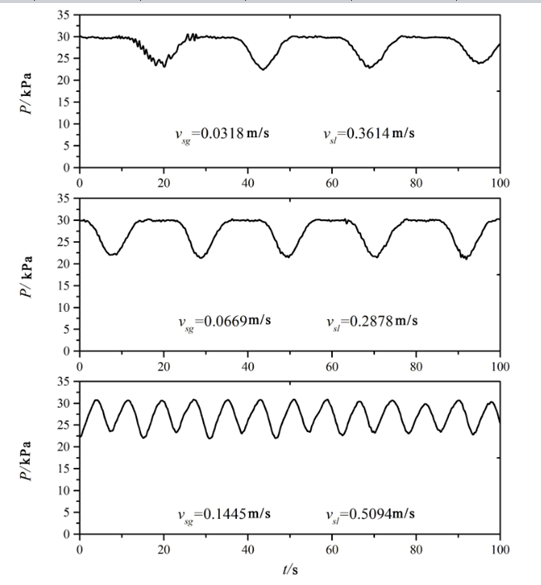
Figure 1: Pressure fluctuation characteristic of the severe slug flow
Recent Publications
1.Xing L C and Yeung H (2013) Numerical study on mitigating severe slugging in pipeline/riser system with wavy pipe. International Journal of Multiphase Flow 53:1-10.
2. Kuiper G L, Metrikine A V, Battjes J A (2007) A new time-domain drag description and its influence on the dynamic behavior of a cantilever pipe conveying fluid. Journal of Fluids and Structures 23(3):429–445.
3. Zhang T, Cao B, Fan Y, et al. (2011) Gas-liquid flow in circular microchannel. Part I: Influence of liquid physical properties and channel diameter on flow patterns. Chemical Engineering Science 66(23):5791-5803.
4.Tay B L and Thorpe R B (2004) Effects of liquid physical properties on the forces acting on a pipe bend in gas-liquid slug flow. Chemical Engineering Research and Design 82(3):344-356.
5.Morse T L, Govardhan R N and Williamson C H K (2008) The effect of end conditions on the vortex-induced vibration of cylinders. Journal of Fluids and Structures 4(8):1227-1239.
Jin-Hee Yoon
Inha University, South Korea
Title: Two particle correlation in heavy-ion collisions using momentum kick
Time : 14:40-15:00
Biography:
Jin-Hee Yoon is an experienced researcher from Inha University in Korea, where she has been a Professor since 1995. Her expertise is in phenomenological understanding of high-energy heavy-ion collision experiments and she is currently leading a Korean ALICE group.
Abstract:
In heavy-ion collisions at high energies, the medium consisted of elementary particles, called parton, is created in a short time. The medium expands fast and cools down. As it cools down, partons combine into various hadrons, which are coming out of the medium with high speed. There are streams of energetic particles in a certain direction, which are called jets. The momenta of jets particles are correlated with momenta of other energetic particles through the medium partons. In a literature, they count the number of particles in a certain direction with respect to the specific jet particle. It shows the peak at zero azimuthal angle due to the cone-shape of the stream. However, the shapes are different depending on the momentum range of jet particles. We try to understand this behavior using the momentum kick model. Very energetic jet particle experiences several collisions while coming through the medium. It transfers the momentum kick to the medium partons in a same direction and the medium partons can align along the jet particle. We applied this model to the Pb-Pb collision data in LHC and found that the model works well.
Recent Publications
1.V Khachatryan (CMS collaboration) (2015) Long-range two-particle correlations of strange hadrons with charged particles in pPb and PbPb collisions at LHC energies. Physics Letters B 742:200-224.
2. Cheuk-Yin Wong (2012) Bose-Einstein interference in the passage of a jet in a dense medium. Physical Review C DOI: 10.1103/PhysRevC.85.064909.
Asher Yahalom
Ariel University, Israel
Title: Variational principles for topological non-barotropic fluid dynamics
Time : 15:00-15:20

Biography:
Asher Yahalom is a Full Professor in the Faculty of Engineering at Ariel University and the academic Director of the Free Electron Laser User Center which is located within the University Center campus. He received his BSc, MSc and PhD degrees in Mathematics and Physics from the Hebrew University in Jerusalem, Israel in 1990, 1991 and 1996 respectively. He was a Postdoctoral Fellow (1998) in the Department of Electrical Engineering of Tel-Aviv University, Israel. He was a Visiting Fellow at the University of Cambridge, UK during the years 2005-2006, 2008 and 2012.
Abstract:
Ideal barotropic fluid flows with the same circulation structure as steady flows generically have commoving physical surfaces on which the vortex lines lie. These become Bernoullian surfaces when the flow is steady. When these surfaces are nested (vortex line foliation) with the topology of cylinders, toroids or a combination of both, a Clebsch representation of the flow velocity can be introduced. This is then used to reduce the number of functions to be varied in the variational principles for such flows. We then can introduce a three function variational formalism for steady and non-steady barotropic flows. In ideal non barotropic flow, circulation is not conserved in the general case but one has a new commoving variable, that is the entropy itself. We will show how entropy considerations will affect the construction of compact variational principles and what are the unique topological local and global conservation laws associated with non-barotropic flows which are derived from those variational principles. The results are compared with analogous study of variational principles and topological constants of motion in non-barotropic magnetohydrodynamics. Possible applications such as flow stability analysis and numerical simulations will also be mentioned
Recent Publications
1. A Yahalom (2003) Method and system for numerical simulation of fluid flow. US patent 6,516,292.
2. Asher Yahalom and Donald Lynden-Bell (2014) Variational principles for topological barotropic fluid dynamics. Geophysical & Astrophysical Fluid Dynamics. 108(6):667-685.
3. Asher Yahalom (2016) Simplified Variational Principles for non-Barotropic Magnetohydrodynamics. Journal of Plasma Physics doi:10.1017/S0022377816000222.
4.Asher Yahalom (2016) Non-barotropic magnetohydrodynamics as a five-function field theory. International Journal of Geometric Methods in Modern Physics. doi:10.1142/S0219887816501309.
5. Asher Yahalom (2017) A conserved local cross helicity for non-barotropic MHD. Journal of Geophysical & Astrophysical Fluid Dynamics 111(2):131–137.
Sergey Utyuzhnikov
University of Manchester, UK
Title: Near-wall domain decomposition in turbulence modeling: Current state of the art and perspectives
Time : 15:20-15:40

Biography:
Sergey Utyuzhnikov is an expert in numerical methods and their applications in fluid dynamics. He is Professor in Computational Mathematics (Russian Ministry of Education) since 1999. He has fundamental results in the numerical modeling of hypersonic flows, non-overlapping domain decomposition for turbulence modeling, active sound control and multi objective optimization. He has provided consultancy work for industrial companies such as Daimler-Benz, ABB, ALSTOM and EDF. He has given invited talks at Los Alamos National Laboratory (USA), Isaac Newton Institute (Cambridge), Henri Poincare Institute (Paris), Schlumberger (Cambridge), EDF/CNRS (Paris), ALSTOM Technology Centre (Zurich), ABB (Zurich), CARDC and many international conferences. He has been the author or co-author of over 100 peer reviewed journal publications and many conference papers. Currently, he is Reader in Computational Mechanics at the University of Manchester.
Abstract:
It is well recognized that the near-wall turbulence modeling is computationally a very expensive problem. The talk addresses a novel approach based on non-overlapping domain decomposition. To realize the domain decomposition, the computational domain is split into the inner region nearby the wall and the outer region. The governing equations in the inner region are reduced to the parabolized Navier-Stokes equations. Thereby, the domain decomposition appears to be approximate although the simplification of the governing equations in the region is mostly justified. As a result, there is a trade-off between the accuracy and computational time. The approach has proven its efficiency for industrial applications. It was shown that the computational time can be saved as much as one order of magnitude whilst the error does not exceed a few percent. The key element of the domain decomposition is the boundary condition at the interface boundary. The interface boundary conditions are achieved via the transfer of the boundary condition from the wall to an interface boundary. If the governing equations in the inner domain are reduced to the parabolized Navier-Stokes equations, then the interface boundary conditions prove to be of Robin type. If the interface boundary is far enough from the wall, the computational time is reduced by one order of magnitude. However, the near-wall turbulence effects might not be well-resolved. In turn, if the interface boundary tends to the wall, then the solution completely coincides with the original low-Reynolds- number-model solution but the effect from domain decomposition vanishes. In the talk, the computational efficiency of the proposed domain decomposition approach is confirmed via the convergence analysis. Possible approaches to the exact domain decomposition are also analyzed. In addition, the extension of the technique to unsteady problems is considered with some examples.
Recent Publications
1. Jones A and Utyuzhnikov S (2016) A near-wall domain decomposition approach in application to turbulent flow in a diffuser. Applied Mathematical Modelling 40(1):329-342.
2. Jones A and Utyuzhnikov S (2015) Application of a near-wall domain decomposition method to turbulent flows with heat transfer. Computers & Fluids 119:87-100.
3.Utyuzhnikov S V (2014) Towards development of unsteady near-wall interface boundary conditions for turbulence modelling. Computer Physics Communications 185(11):2879-2884.
4.Utyuzhnikov S V (2012) Interface boundary conditions in near-wall turbulence modeling. Computers & Fluids 68:186-191.
5. Utyuzhnikov S V (2009) Domain decomposition for near-wall turbulent flows. Computers & Fluids 38(9):1710-1717.
Ulrich Razafison
Université de Bourgogne Franche-Comté, France
Title: Mathematical analysis of the exterior problem of Navier-Stokes using weighted Sobolev spaces
Time : 15:40-16:00
Biography:
Ulrich Razafison is currently an Assistant Professor at the Laboratoire de Mathématiques de Besançon, Université de Bourgogne Franche-Comté, France. His current research interests are in the mathematical analysis of elliptic problem in unbounded domains with the use of weighted Sobolev spaces, in the numerical simulations of conservation laws with application to traffic flow and epidemiology and he is also interested in numerical methods that allow to reduce computational costs such as reduced basis methods.
Abstract:
We are interested in the stationary Navier-Stokes equations describing viscous fluid flow past an obstacle. Because the flow domain is unbounded, we choose to set the problem in a functional framework that uses weight functions to control the behavior at infinity of solutions. To take into account, the wake region behind the obstacle, anisotropic weights are considered. A first indispensable step is the investigation of the Oseen equations that are a linearized version of the Navier-Stokes equations. After presenting the models, we will be interested in the existence and uniqueness results.
Recent Publications
1 Razafison U (2008) The stationary Navier-Stokes equations in 3D exterior domains. An approach in anisotropically weighted Lq spaces. Journal of Differential Equations 245:2785-2801.
2 Amrouche C and Razafison U (2007) The stationary Oseen equations in R3. An approach in weighted Sobolev spaces. Journal of Mathematical Fluid Mechanics 9:211-225.
3 Amrouche C and Razafison U (2007) Weighted Sobolev spaces for a scalar model of the stationary Oseen equations in R3. Journal of Mathematical Fluid Mechanics 9:181-210.
4 Razafison U (2006) Anisotropic weighted Lp spaces for the stationary exterior 3D problem of Oseen. J. Math. Anal. Appl. 323:275-292.
5 Amrouche C and Razafison U (2006) Anisotropically weighted Poincaré-type inequalities; Application to the Oseen problem. Math. Nachr. 279:931-947.
Sergey V Alekseyenko
Oles Honchar Dnipro National University, Ukraine
Title: Numerical simulation of the airfoils icing processes
Time : 16:20-16:40

Biography:
Sergey V Alekseyenko is an Associate Professor, Lecturer of Oles Honchar Dnipro National University, Department of Mechatronics. He has experience in the sphere of the numerical simulation of the hydro aerodynamics and, heat and mass transfer processes in the areas with free boundaries. His actual scientific interests are computational prediction of ice growth on aircraft surfaces, analysis of the effects of ice growth on aircraft aerodynamics and performances, icing physic.
Abstract:
In-flight icing of aircrafts is recognized as a world-wide serious hazard. The resulting ice layer changes the airfoils geometry, flow structure, increases drag, reduces lift and stall angle, has an adverse effect on the controllability of the aircraft as a whole. Development of modern computers has created opportunities for the application of numerical simulation methods together with the icing wind tunnel and aircraft flight tests. As a result, it allows to reduce the time and the cost of the development of anti-icing systems and to expand the investigation parameters range. In “classical” icing codes the potential equation for flow field and integral solutions for boundary layer are used. On one hand, these instruments are simple and productive, very good validated and accepted by authorities in the processes of aircraft certification. But on the other hand, the integral solutions have limitations because they are one-dimensional, assume local properties and neglect most of flow history effects. The present work aimed at creating a numerical simulation method considering the viscosity and compressibility of the air-droplet flow, the micro roughness on the icing surface and thus, allowing to estimate their influence on the aircraft aerodynamic performances. The numerical differential Reynolds-Averaged Navier-Stokes equations for calculation of airflow are used. For the description of turbulence, the modified Spallart-Almaras model is used. The motion of the supercooled drops is described using a model of interpenetrating media. When implementing the methodology, a method of control volumes based on the experimental investigations of the processes of interaction between supercooled large droplets and the icing airfoil surface as well as physical phenomena occurring during the icing process, a splitting method and an implicit difference scheme are used. Based on the developed methodology, simulation of NACA 0012 airfoil icing process was made. The influence of the surface roughness on the structure of the flow field, the distribution of the pressure, friction and heat transfer coefficients, as well as the lift and drag, the stall angle were estimated.
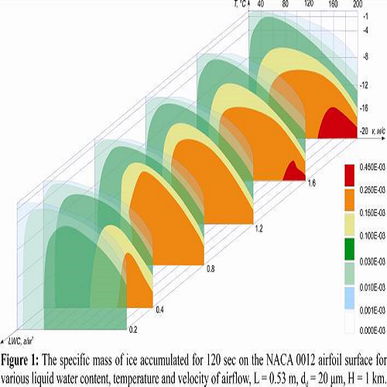
Recent Publications
1. Alekseenko S V, Mendig C, Schulz М, Sinapius М and Prykhodko О Р(2016) An experimental study of freezing of supercooled water droplet on solid surface. Technical Physics Letters 42:524-527.
2. Alekseenko S V and Prikhod’ko A A (2014) Mathematical modeling of ice body formation on the wing airfoil surface. Fluid Dynamics 49:715–732.
3. Prykhodko A A and Alekseenko S V (2014) Numerical simulation of the process of airfoil icing in the presence of large supercooled water drops. Technical Physics Letters 40:884–887.
4. Prikhod’ko A A and Alekseenko S V (2014) Numerical simulation of the processes of icing on airfoils with formation of a “barrier” ice. Journal of Engineering Physics and Thermophysics 87:598-607.
5.Alekseyenko S V and Prykhodko O A (2013) Numerical simulation of icing of a cylinder and an airfoil: model review and computational results. TsAGI Science Journal 44:761-805.
Adelaida Garcia-Magarino
Isdefe, Spain
Title: Droplet deformation and breakup in the shoulder region of an aerodynamic surface: Experimental characterization
Time : 16:40-17:00

Biography:
Adelaida Garcia-Magariño became aerospace engineer in the end of 2009 and started working at INTA in the beginning of 2010 as an external consultant. She has been involved in the NASA/INTA cooperation on Icing (2010-2016), in which she has developed her PhD on droplet deformation, and breakup near the leading edge of an airfoil and has authored more than 10 papers related to Icing Physics. She is now involved in National projects (DFLOW, MEDA, MICRA) funded by the Spanish Ministries of Economy and Competitiveness.
Abstract:
Statement of the Problem: To study droplet aero breakup, many theoretical and experimental studies (based, mostly, on shock tube type facilities) have been carried out in nearly constant high flow velocity conditions. However certain applications of aeronautical engineering interest are characterized by accelerating flow profiles and the flow velocity profile has influence on the droplet deformation and breakup processes. Previous studies concern droplets in the stagnation line of the leading edge of an airfoil, while this investigation studies the behavior of the droplets in the shoulder region of an incoming airfoil.
Methodology & Theoretical Orientation: Experimental tests were conducted in the rotating arm facility at INTA. A blunt airfoil model of chord 0.47 m was mounted at the end of the rotating arm of length 2.2 m that moved at 50, 70 and 90 m/s. A stream of water droplets of diameter of 1000 µm was allowed to fall in the path of the airfoil. The air velocity observed by the droplets, which was continuously increasing, was characterized using PIV. The phenomenon was recorded by a high-speed camera at 72000 fps using the shadowgraph illumination technique. Droplets trajectories and deformations were obtained in three different regions close to the airfoil shoulder (Figure 1).
Findings: The results show that droplets in the shoulder region tend to rotate providing new structures, different from those obtained in the stagnation line (Figure 2). The rotation generates interferences between droplets that have been quantified using an existing theoretical model derived for droplets in the stagnation line.
Conclusion & Significance: Deformation of droplets in the shoulder region of an airfoil has been studied for nine cases corresponding to three different airfoil velocities and three fields of view height. In these regions droplets tend to tilt significantly, which causes aerodynamic interferences between consecutive droplets.
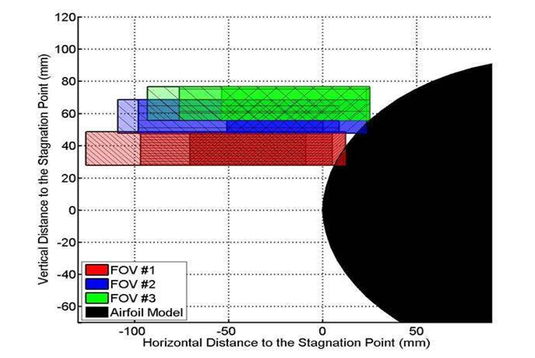
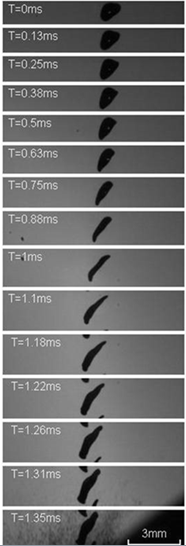
Recent Publications
1. Theofanous T G (2011) Aerobreakup of Newtonian and viscoelastic fluids. Annual Review of Fluid Mechanics 43:661-690.
2. Rendall T C and Allen C B (2014) Finite volume droplet trajectories for icing simulation. International Journal of Multiphase Flow 58:185-194.
3. Iuliano E, Mingione G, Petrosino F and Hervy F (2011) Eulerian modeling of large droplet physics toward realistic aircraft icing simulation. Journal of Aircraft 48:1621-1632.
4. Cao Y, Wu Z and Xu Z (2014) Effects of rainfall on aircraft aerodynamic. Progress in AerospaceSciences71:85-127.
5. Sor S, García-Magariño A and Velázquez A (2016) Model to predict water droplet trajectories in the flow past an airfoil. Aerospace Science and Technology 58:26-35.
R Alberto Bernabeo
Abu Dhabi University, UAE
Title: Traditional and innovative methodologies (UAV-based) for the study of the dynamics of atmospheric aerosols
Time : 17:00-17:20

Biography:
R Alberto Bernabeo is a Doctor in Aeronautical Engineering, in Physics of the Earth System, in Geography and Territorial Processes, in Environmental Sustainability and in the Science of Education with a solid background as Airline Pilot and Instructor. His current research areas are related to the impact of climate change and weather on air transport in the UAE: reduction of CO2 emissions as well as studying and testing of a green trainer to transform small general aviation aircraft for training into no-emission aerial vehicles and finally volcanic eruptions detection by RPAS/UAV of chemical composition of particles with direct threat to the safety of aircraft in flight and health effects on human beings.
Abstract:
Measurements of near-surface gradients in trace gas and aerosol particle concentrations have been limited to studies conducted from fixed location towers or tethered balloons. Moreover, the third spatial coordinate (whatever the height or atmospheric thickness is considered) is usually neglected, leaving a significant gap in aerosol properties. Furthermore, taking measurements close to pollutant sources may not always be possible and it could be too dangerous or risky for manned aircraft to fly close to the ground. These reasons promote the use of small, lightweight UAVs for a range of applications, including atmospheric measurements. Small Unmanned Aerial Vehicles (UAVs) offer new opportunities to air pollution and atmospheric studies. However, there are a number of critical design decisions which need to be taken in order to enable representative data collection, which are a function of UAV motion, propellers and principle/mechanisms of the probes to be mounted on them. The research will include at least a series of different tests: (1) evaluation of the air flow behavior of a multicopter, its downwash and upwash effect, by measuring air speed along three axes to determine the location where the sensors should be mounted; (2) evaluate the use of gas sensors for CO2, CO, NO2 and NO, and the Particle Number Concentration (PNC) monitor to assess their efficiency and performance in a stand-alone situation (by comparing their results with those from reference or at least traceable standard instrumentation) as well as on board of the UAV. The experimental results will be therefore analyzed in depth with the aim of producing a reliable experimental protocol for UAV-based validated data and possibly to set the basis for experimental guidelines in this field. Such research should be undertaken before any UAV system is developed for real world data collection.
Recent Publications
1. Marco Tavani Guido Barbiellini, A Argan, Natalia Auricchio, Alberto R Bernabeo, A Bulgarelli et. al. (2003). The AGILE instrument. Doi: 10.1117/12.461312
2.Bernabeo R A, Bombardi T, Persiani C A, Piancastelli L (2014) An augmented reality interface proposal to improve air transportation safety. Far East Journal of Electronics and Communications. 12(2):79-97.
3.Piancastelli L, Bernabeo R A (2015) Noise reduction and control in DCFS FBW with hardware and digital fuzzy filters. 10(8):3418-3424.
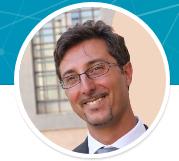
Biography:
Dr. Emiliano Costa graduated in Mechanical Engineering and received PhD in Energy and Environment Engineering at the University of Rome Tor Vergata. He worked as researcher in the HPC centre CINECA, as CFD designer in the University spin-off SCIRE and as CAE expert consultant for different private firms. Since October 2007 he has been working for RINA Consulting (formerly D’Appolonia) and he is currently member of the “Industrial design & CAE” team. In the aviation sector, he used to be the coordinator of the EU FP7 project RBF4AERO (www.rbf4aero.eu) and is the Project Investigator of the Experiment n. 906 of Fortissimo 2 (https://www.fortissimo-project.eu/). He is active in the scientific community as author of papers and reviewer for specialized journals. The main topics which he has worked in the last years are blast, FSI and the application of mesh morphing techniques in simulation-based design and optimization.
Abstract:
The RBF4AERO project is properly conceived to tackle all the aspects related to aircraft numerical design and optimization by making the CFD model parametric through an innovative shape optimization tool based on a high-performance meshless morphing technique. This technique is founded on Radial Basis Functions (RBFs) theoretical approach which offers a number of distinct advantages over the more traditional optimization approaches. This new optimization methodology will guarantee very fast and highly detailed CFD optimization analyses such to significantly reduce costs of optimization of aircraft aerodynamics without losing accuracy or domain extent. The final goal of the Project is the development of the RBF4AERO Benchmark Technology, namely a dedicated numerical platform and strategy capable to allow aeronautical design engineers to build up the novel optimization environment by using their own numerical models and computing platforms, and achieve the results of multi-objective and multi-disciplinary optimization studies in a dramatically shorter time with respect to current practices, and with no need to face with typical limiting trade-off constraints. Besides, the RBF4AERO numerical platform enables to solve other relevant aircraft design studies such as FSI and icing growth in an original fashion, and proposes a challenging CFD optimization technique that foresees the adjoint-morphing coupling.
Relevant impact is then expected in the ever-growing technological demand posed by aeronautical manufacturers in relation to the performance and reliability of aircrafts constituting components. The RBF4AERO Project is funded by the EU Seventh Framework Programme (FP7/2007-2013) under GA n° 605396.
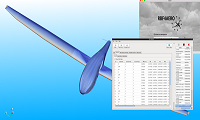
Recent Publications
1. Biancolini, M.E., E. Costa, U. Cella, C. Groth, G. Veble, "Glider Fuselage–Wing Junction Optimization using CFD and RBF Mesh Morphing", Aircraft Engineering and Aerospace Technology: An International Journal, Vol. 88 Iss 6 pp. 740 - 752, October 2016, Emerald Group Publishing Limited. DOI: 10.1108/AEAT-12-2014-0211.R1
2. Andrejašic, M., D. Eržen, E. Costa, S. Porziani, M.E. Biancolini, and C. Groth, "A Mesh Morphing Based FSI Method used in Aeronautical Optimization Applications", ECCOMAS Congress 2016, Crete Island, Greece.
3. Papoutsis-Kiachagias, E.M., M. Andrejasic, S. Porziani, C. Groth, D. Erzen, M.E. Biancolini, E. Costa, and K.C. Giannakoglou, "Combining an RBF-Based Morpher with Continuous Adjoint for Low-Speed Aeronautical Optimization Applications", ECCOMAS Congress 2016, Crete Island, Greece.
4. Kiyici F, Yilmazturk S, Arican E, Çoban K, Costa E, Porziani S, "U-turn Optimization of a Ribbed Turbine Blade Cooling Channel Using a Meshless Optimization Technique", AIAA SciTech Forum 2017, 9–13 January 2017, Gaylord Texan, Grapevine, Texas (US).
5. Kiyici F, Yilmazturk S, Çoban K, Arican E, Costa E, Porziani S, "Rib Cross Section Optimization of a Ribbed Turbine Internal Cooling Channel with Experimental Validation", Proceedings of ASME Turbo Expo 2017: Turbine Technical Conference and Exposition, June 26-30, 2017, Charlotte, NC, USA.
Biography:
Mattia Barbarino has a PhD in Mechanical Systems Engineering, and is responsible for the Computational Acoustics Lab at CIRA, Italy. He has been working at CIRA since 2007 in Aeroacoustics, CAA software development and numerical simulation. He has developed a multi-disciplinary view to the aircraft/rotorcraft noise prediction and reduction problem, being active in several EU funded projects (e.g. Nice trip, Cesar, Clean-Sky JTI GRA and GRC ITD) and collaborative projects (GARTEUR). He is Member of the CEAS Aeroacoustics Specialists Committee and point of contact of the IFAR working group on Noise.
Abstract:
The problem of noise generation by compressible turbulent jets has been the subject of studies since the early 1950s, with the introduction of the turbojet also in commercial aircraft. Despite the application of Direct Numerical Simulation to jet-noise prediction, becoming more feasible with the growing advancement in computational resources, industry interest is mainly devoted to fast and reliable numerical tools to be used for design and optimization. Therefore, RANS (Reynolds-Averaged Navier–Stokes) simulations remain the more feasible approach for CFD applications of industrial interest. In this work, the prediction and reduction of noise from subsonic jets through the reconstruction of turbulent fields from RANS calculations are addressed. This approach, known as Stochastic Noise Generation and Radiation, reconstructs the turbulent velocity fluctuations by RANS fields and calculates the source terms of Vortex Sound acoustic analogy. In the first part, numerical and experimental jet-noise test cases have been reproduced to validate the approach for its subsequent use as a design tool. The noise spectra, predicted with SNGR (Stochastic Noise Generation, and Radiation), are in good agreement with both the experimental data and the results of Large-Eddy Simulations. In the last part of this work, an active fluid injection technique, based on extractions from turbine and injections of high-pressure gas into the main stream of exhausts, has been proposed and finally assessed with the aim of reducing the jet-noise through the mixing and breaking of the turbulent eddies. Some tests have been carried out to set the best design parameters in terms of mass flow rate and injection velocity and to design the system functionalities. The approach is suitable to be used for the early design phase of jet-noise reduction technologies and a right combination of injection parameters allows for a reduction of the jet-noise to 3.5 dB, as compared to the baseline case without injections.
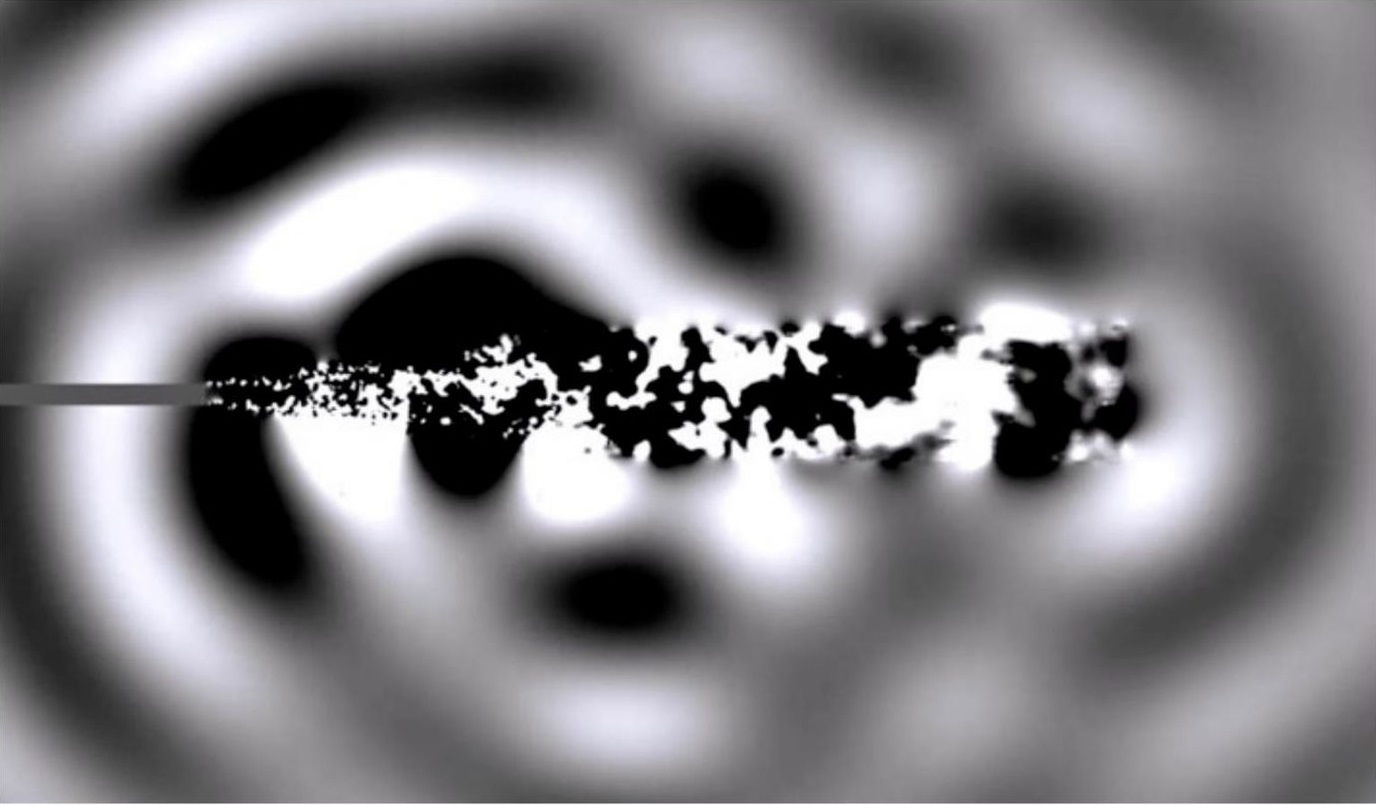
Figure 1: Sound radiation from the jet. Real part of the acoustic pressure [Pa] at 700 Hz.
Recent Publications
1.Barbarino M, Ilsami, M, Tuccillo, R Federico, L (2017) Combined CFD-stochastic analysis of an active fluidic injection system for jet noise reduction. Appl. Sci. 7:623.
2.Barbarino M, Adamo F P, Bianco D, Bartoccini D Hybrid BEM/empirical approach for scattering of correlated sources in rocket noise prediction. Journal of Sound and Vibration. 403:90-103.
- Special Session
Session Introduction
Andrzej Boguslawski
Częstochowa University of Technology, Poland
Title: LES predictions of self-sustained oscillations in round free jets
Time : 10:15-10:50
Biography:
Andrzej Boguslawski has completed his PhD in 1991 from Czestochowa University of Technology (Poland) and Postdoctoral studies from LEMD-CNRS in Grenoble (France). In 2002, he received DSc degree from Czestochowa University of Technology. During 2005-2012, he was the Director of the Institute of Thermal Machinery at Czestochowa University of Technology. He has published more than 100 papers in reputed journals and international conferences proceedings. His research is focused on turbulence modelling, turbulent combustion and shear flows stability. He coordinated many national research projects and participated in international European Framework Programs research projects.
Abstract:
The paper is devoted to recent advancements in numerical simulations of round free jets, which are in common use in many technical applications and which have been widely investigated experimentally and numerically. The attention is attached to conditions under which self-sustained global modes can be triggered in homogeneous and variable density round jets. Global modes result from a phenomenon of absolute instability in low density jets. This phenomenon predicted by linear stability theory was confirmed experimentally in hot air-jet and in air-helium jets. However, as shown recently, self-sustained global oscillations can be released in homogenous density convectively unstable jets provided that a shear layer at the nozzle exit is sufficiently thin. In such a case, a rapid growth of the Kelvin-Helmholtz mode induces a back-flow leading to self-sustained resonant jet oscillations. It was demonstrated by Boguslawski et al. (2013) and Wawrzak et al. (2015) that such a self-excited mechanism requires a low turbulence level and thin shear layer thickness at the nozzle exit characterized by the momentum thickness R/θ = 25 (θ - momentum thickness, R-radius of the nozzle). In Figure 1 the Q-parameter Q = √2 (|Ω|2 - |S|2) (Ω, S- vorticity and strain rate tensors) exhibits toroidal structures resulting from the jet instability. The results are presented for two shear layer thicknesses with R/θ= 20 and R/θ = 28. In the latter case, when the critical thickness is exceeded, the formation of strong vortex structures is observed near the inlet plane, which consequently pair at a distance x/D ≈ 2.9. To the authors’ knowledge, such a self-sustained regime in the homogeneous- density jet is a new phenomenon not reported in the literature so far.

Figure 1: Iso-surfaces of Q - parameter and contours of the axial velocity in the main cross-section. R/ θ =20 -left figure, R/ θ =28 -right figure.
Recent Publications
1.Boguslawski A, Tyliszczak A, Drobniak S and Asendrych D (2013) Self-sustained oscillations in homogeneous-density round jet. Journal of Turbulence 14(4):25–52.
2.Wawrzak K, Boguslawski A and Tyliszczak A (2015) LES predictions of self-sustained oscillations in homogeneous density round free jet. Flow, Turbulence and Combustion 95(2-3):437–459.
3. Boguslawski A, Tyliszczak A, Wawrzak A (2016) LES predictions of unstable round hot jet. Physics of Fluids doi: http://dx.doi.org/10.1063/1.4941656.
4. Monkewitz P A, Bechert D W, Barsikow B and Lehmann B (1990) Self-excited oscillations and mixing in a heated round jet, Journal of Fluid Mechanics 213:611–639.
5. Hallberg M P, Strykowski P J (2006) On the universality of global modes in low-density axisymmetric jets. Journal of Fluid Mechanics 569:493-507
Artur Tyliszczak
Częstochowa University of Technology, Poland
Title: LES predictions of self-sustained oscillations in round free jets
Biography:
Abstract:
The paper is devoted to recent advancements in numerical simulations of round free jets, which are in common use in many technical applications and which have been widely investigated experimentally and numerically. The attention is attached to conditions under which self-sustained global modes can be triggered in homogeneous and variable density round jets. Global modes result from a phenomenon of absolute instability in low density jets. This phenomenon predicted by linear stability theory was confirmed experimentally in hot air-jet and in air-helium jets. However, as shown recently, self-sustained global oscillations can be released in homogenous density convectively unstable jets provided that a shear layer at the nozzle exit is sufficiently thin. In such a case, a rapid growth of the Kelvin-Helmholtz mode induces a back-flow leading to self-sustained resonant jet oscillations. It was demonstrated by Boguslawski et al. (2013) and Wawrzak et al. (2015) that such a self-excited mechanism requires a low turbulence level and thin shear layer thickness at the nozzle exit characterized by the momentum thickness R/θ = 25 (θ - momentum thickness, R-radius of the nozzle). In Figure 1 the Q-parameter Q = √2 (|Ω|2 - |S|2) (Ω, S- vorticity and strain rate tensors) exhibits toroidal structures resulting from the jet instability. The results are presented for two shear layer thicknesses with R/θ= 20 and R/θ = 28. In the latter case, when the critical thickness is exceeded, the formation of strong vortex structures is observed near the inlet plane, which consequently pair at a distance x/D ≈ 2.9. To the authors’ knowledge, such a self-sustained regime in the homogeneous- density jet is a new phenomenon not reported in the literature so far.

Recent Publications
1.Boguslawski A, Tyliszczak A, Drobniak S and Asendrych D (2013) Self-sustained oscillations in homogeneous-density round jet. Journal of Turbulence 14(4):25–52.
2.Wawrzak K, Boguslawski A and Tyliszczak A (2015) LES predictions of self-sustained oscillations in homogeneous density round free jet. Flow, Turbulence and Combustion 95(2-3):437–459.
3.Boguslawski A, Tyliszczak A, Wawrzak A (2016) LES predictions of unstable round hot jet. Physics of Fluids doi: http://dx.doi.org/10.1063/1.4941656.
4. Monkewitz P A, Bechert D W, Barsikow B and Lehmann B (1990) Self-excited oscillations and mixing in a heated round jet, Journal of Fluid Mechanics 213:611–639.
5.Hallberg M P, Strykowski P J (2006) On the universality of global modes in low-density axisymmetric jets. Journal of Fluid Mechanics 569:493-507.
- Plenary Session
Session Introduction
Samir Ziada
McMaster University, Canada
Title: Flow-sound interaction mechanisms during the resonance of trapped diametral modes in shallow cavities

Biography:
Samir Ziada is a Professor at McMaster University and former Chair of Mechanical Engineering. He had 17 years of industrial experience with Sulzer Innotec Ltd. in Switzerland, before joining McMaster University in Canada in 1998. He has received several awards, including the Premier Research Excellence Award of Ontario, the McMaster Award for Excellence in Undergraduate Teaching and the McMaster President Award for Excellence of Graduate Supervision. His research expertise is in the areas of industrial aeroacoustics, flow-induced vibration and unsteady flows. He is currently a regular consultant to several industrial institutions, including the US Nuclear Regulatory Commission, Argonne National Laboratory, Brookhaven National Laboratory, among others. He served as an Associate Editor for the Journal of Fluids and Structures and the Journal of Pressure Vessel Technology. He is a Fellow of the ASME and the CSME and has been the Chair of the ASME Technical Committee on Fluid-Structure-Interaction.
Abstract:
The excitation of trapped acoustic modes within ducted cavities is often encountered in various components of nuclear and conventional power plants, jet engines, turbo-compressors and other engineering equipment. This phenomenon is investigated for a square shallow cavity during the resonance of its lowest four acoustic modes (Figure 1). The unsteady flow structure and the acoustic mode shapes during these resonances are detailed by means of pressure measurements at various azimuthal locations, time resolved particle image velocimetry technique, and numerical simulation of the resonant modes using finite element analysis. Three different interaction patterns are analyzed, corresponding to the resonance of a single stationary acoustic mode, simultaneous excitation of two different stationary acoustic modes, and a special case of spinning mode resonance due to the excitation of two degenerate acoustic modes. After reviewing the general resonance response of the four acoustic modes, attention will be focused on the dual resonance case (i.e., simultaneous excitation of modes 3 & 4 which have different frequencies and mode shapes). In this case, the circumference of the cavity shear layer is found to be divided into 8 segments, each of which is acoustically excited at a frequency which is different from those exciting the adjacent segments. The excitation level is also not uniform over each segment. Despite this rather complex pattern of acoustic excitation along the shear layer circumference at the upstream cavity corner, coherent vortices of different frequencies and phase do form over various segments of the shear layer circumference and are found to retain their individual coherence as they travel along the cavity mouth up to the downstream corner. The results of this study substantially improve our understanding of this complex excitation mechanism and the acquired flow visualization images constitute a challenging benchmark case for the validation of Computation Aero-Acoustic (CAA) codes.
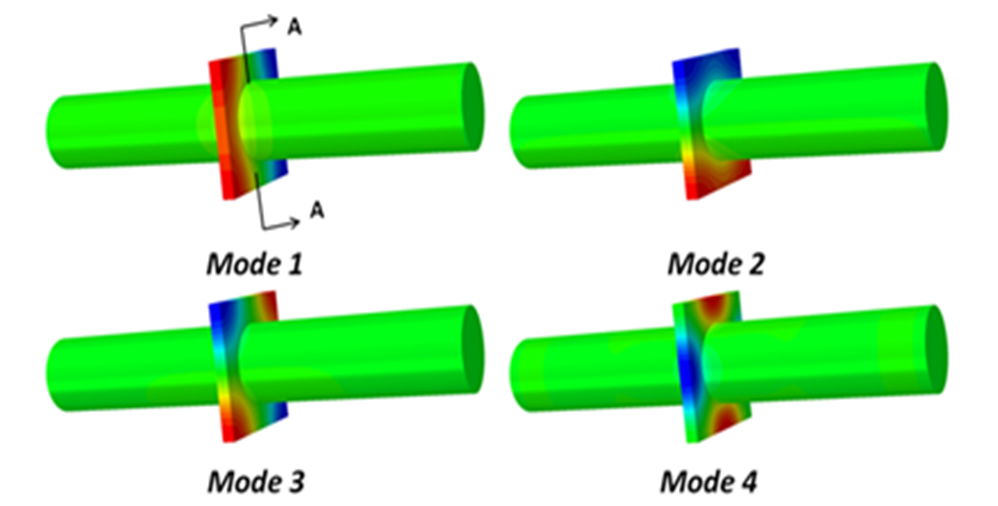
Figure 1: Acoustic pressure distributions of the first four trapped acoustic modes obtained by means of numerical simulation
Recent Publications
1. Aly K and Ziada S (2010) Flow-excited resonance of trapped modes of ducted shallow cavities. Journal of Fluids & Structures 26:92-120.
2.Aly K and Ziada S (2011) Azimuthal behavior of flow-excited diametral modes of internal shallow cavities. Journal of Sound & Vibrations 330:3666-3683.
3. Aly K and Ziada S (2016) Review of flow-excited resonance of acoustic trapped modes in ducted shallow cavities. Journal of Pressure Vessel technology 138:040803.
4. Hein S and Koch W (2008) Acoustic resonances and trapped modes in pipes and tunnels. Journal of Fluid Mechanics 605:401-428.
5.Tonon D, Hirschberg A, Golliard J and Ziada S (2011) Aeroacoustics of pipe systems with closed branches. International Journal of Aeroacoustics 10 (2):201-276.
- Aero Dynamics | Aero Acoustics | CFD- Methodology | Thermo- Fluid Dynamics
Chair
Konstantinos Kontis,
University of Glasgow, UK
Co-Chair
I V Sharikov
Saint Petersburg Mining University, Russia
Session Introduction
Xesús Nogueira
Universidade da Coruña, Spain
Title: New meshless formulations for aeroacoustics and compressible aerodynamic computations
Time : 10:10-10:30

Biography:
Xesús Nogueira has his expertise in Computational Fluid Dynamics. He earned his PhD degree from University of A Coruña, Spain in 2009. He was Visiting Professor during the period 2011-2012 at Arts et Métiers ParisTech, France, and he is currently an Associate Professor in the Civil Engineering School at University of A Coruña. His research interests are focused on computational fluid mechanics, high-order methods for compressible and incompressible flows. He has received the Juan C Simo Young Investigator Award from SEMNI, the Spanish Society for Numerical Methods in Engineering.
Abstract:
The development of numerical methods for the simulation of problems involving highly complex geometries, which are frequent in many engineering problems, remains a very active research field in computational fluid dynamics (CFD). In the simulation of turbulent flows, for example, high-accurate numerical techniques are required to account for the fine scales of the flow. In these kinds of problems, the construction of a good quality mesh is one of the most time-consuming procedures. Another example is Computational Aeroacoustics (CAA), where the low magnitude of acoustic waves and the wide range of frequencies involved, makes mandatory the use of very accurate numerical schemes. Nowadays, the standard numerical techniques in CAA are mainly grid-based methods. However, the use of Lagrangian methods in the context of CAA may be interesting for problems involving deformable or moving boundaries in the propagation media or multiphase flows, such as combustion noise, sound propagation through multiphase flows or bubble acoustics. Unfortunately, there are very few Lagrangian numerical methods to solve CAA problems in the literature. In this work, we propose a new high-accurate, stable and low- dissipative meshless method based on a Galerkin discretization of a set of conservation equations on an ALE approach, using moving least squares as weight functions for the Galerkin discretization. The stability of the scheme is achieved by the recent a posteriori multi-dimensional optimal order detection paradigm. We apply the numerical scheme to some test cases including CAA (Figure 1) and compressible flows. The proposed numerical method can be seen as a general formulation which includes some well-known meshfree methods. The promising results obtained shown that the proposed scheme can be applied to problems with engineering interest.
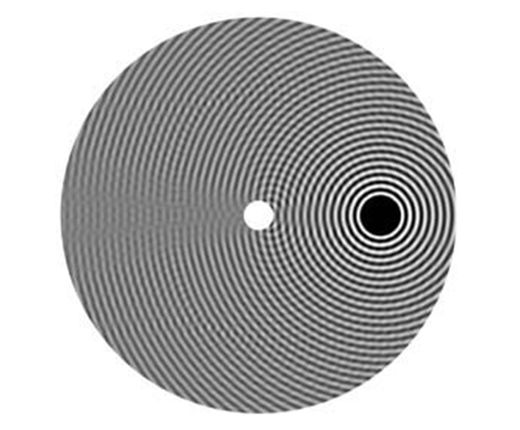
Figure 1: Time-periodic Gaussian source scattering by a circular cylinder computed with the proposed scheme.
Recent Publications
1. Y O Zhang, T Zhang, H Ouyang, T Y Li (2016) Efficient SPH simulation of time-domain acoustic wave propagation. Engineering Analysis with Boundary Elements 62:112-122.
2. S Clain, S Diot, R Loubère (2011) A high-order finite volume method for systems of conservation laws- Multidimensional Optimal Order Detection (MOOD). Journal of Computational Physics 230:4028-4050.
3. J P Vila (1999) On particle weighted methods and smooth particle hydrodynamics. Mathematical Models and Methods in Applied Sciences 9(2):161-209.
4. X Nogueira, L Ramírez, S Clain, R Loubère, L Cueto-Felgueroso and I Colominas (2016) High-accurate SPH method with multidimensional optimal order detection limiting. Computer Methods in Applied Mechanics and Engineering 310:134-155.
5. E Gaburov and K Nitadori (2011) Astrophysical weighted particle magnetohydrodynamics. Monthly Notices of the Royal Astronomical Society 414:129-154.
Piergiacomo Cancelliere
Italian National Fire Rescue and Service – CNVVF – Rome, Italy
Title: CFD analysis and experimental tests of a fire safety pressurized smokeproof enclosure

Biography:
Piergiacomo Cancelliere got his Master’s Degree in Electrical Engineering in April 1998 at the University of Cassino, Italy. He took his PhD in Conversion of Electrical Engineering from the Second University of Naples in 2007. He started his career as an Electrical Engineer working for some relevant electrical enterprises, such as ABB. From June 2001 to April 2006, he was with the Electrical Machines and Drives Research Group of the University of Cassino. In May 2006, he joined the Italian National Fire Rescue and Service. He is currently a Senior Fire Officer. His technical and scientific topics cover both active and passive fire protection measures, fire assessment of electrical installations, components and ATEX related aspects. He is also a member of several TCs of the Italian Electrotechnical Committee and of the Italian technical standardization organization. He has authored more than 50 papers on international, national journals and conference proceedings.
Abstract:
Pressure differential systems have the purpose of maintaining tenable conditions in protected spaces for different types of building safe places like, escape routes, firefighting access routes, lobbies, stairwells and refuge areas. The aim of pressure differential systems is to establish airflow paths from protected spaces at high pressure to spaces at lower or ambient pressure, preventing the spread of toxic gas released during a fire. This strategy ought to be supported by a detailed design of the necessary air supply, considering also the cycle of opening and closing doors during the egress phase. The study deals with the design and experimental test of a simple pressure differential system intended to be used in a building as a pressurized smoke proof enclosure. Experimental tests are conducted in a simple 3 meter side cubic enclosure with two doors and no vent openings (Figure 1 and Figure 2). While a centrifugal fan blows constant airflow inside the structure, pressure trend in time is recorded during steady state and transient conditions; additionally, the velocity of the airflow across the doors has been measured by means of an anemometer. Numerical simulations are carried out to reproduce the same smoke proof enclosure configuration (both geometry and boundary conditions) using Fire Dynamics Simulator (FDS). Furthermore, specific attention is paid to the modelling of the leakage across the doors, directly inserted in the model through a localized HVAC (Heating and Venting Air Conditioning) advanced leakage function. Comparison between experimental tests and numerical simulations are provided. Once the model was correctly calibrated, other geometrical and mechanical configurations have been analyzed and studied, looking for more convenient and efficient positions of the fan to fulfil the requirements of pressure differential, airflow velocity and door handle force. This study highlights some fundamental aspects on the pressurization and depressurization during steady state and transient phases, trying to identify if there are airflow profiles typical of some geometrical configurations.
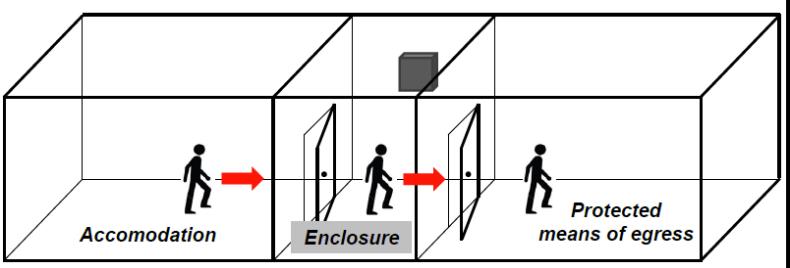
Figure 1: Pressurized fire safety smoke proof enclosure
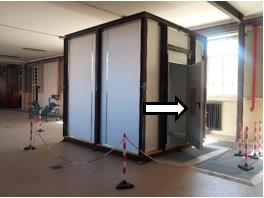
Figure 2: Experimental fire safety smoke proof enclosure
Recent Publications
1. G Gai and P Cancelliere (2017) Design of a pressurized smoke proof enclosure: CFD analysis and experimental tests. Safety doi:10.3390/safety3020013.
2. P Cancelliere (2016) PV electrical plants fire risk assessment and mitigation according to the Italian national fire services guidelines. Fire and Materials 40(3):355–367.
3.P Cancelliere and C Liciotti (2016) Fire behaviour and performance of photovoltaic module backsheets. Fire Technology 52(2):333–348.
Tahir Yavuz
BaÅŸkent University, Turkey
Title: Optimization analysis of the combinations of concentrator and wind turbine with flap in CFD

Biography:
Tahir Yavuz has completed BSc in Mechanical Engineering from Karadeniz Technical University Turkey, and PhD in Aeronautical Engineering, Leicester University, England. He worked at Erciyes and Karadeniz Technical Universities, Turkey and is currently working as a full time Professor at Baskent University, Turkey. He is interested in bluff body aerodynamics, renewable energies such as wind energies and wind turbines. He has developed high-performance wind turbine blades such as airfoil with slat arrangements.
Abstract:
Due to rapidly increasing population and technological advances the demand for energy is increasing day by day. To meet this demand the technology is turning to renewable energy sources rather than fossil fuels. The importance given to wind and hydrokinetic energies is increasing with each passing day. In this context, many studies are done to improve the turbine performance. Today, depending on technological developments, the minimum speed of wind and hydrokinetic current to produce electricity from wind and hydrokinetic turbines is about 3-4 m/s and 1-2 m/s respectively. To generate electricity at lower speed from wind turbine two different studies are performed. The first one is the design of the high-performance blade (such as slatted blade and twin blades), and second one is the design concentrator suitable for turbine to increase wind speed. In this study, the optimization of the combinations of concentrator with wind turbine is curried out. The concentrator and flap geometries and positions highly effect the turbine performance so a numerical optimization method coupled the response surface method with genetic algorithm was employed to obtain concentrator and flap position leading maximum velocity increase at the wind turbine zone. Taguchi optimization method applied to the system without wind turbine gives speed increase in the concentrator is about approximately 2 times. More realistic results will be obtained by Response Surface Methods. Some outputs from the study are presented in Figure 1 and 2. Velocity and pressure distributions in the concentrator obtained at the optimum parameters are given in Figures 1 and 2 respectively. Although Taguchi design can achieve results in less experimentation than full factorial design, this method yields only the optimum result for at the one of the factor levels defined in the optimization study. Therefore, the other optimization method, Response Surface Method, outlined above is used in the optimization. The method will give optimum results in the range of the factor levels defined not at the defined levels. More details will be given in the full paper.

Figure 1: Velocity distribution

Figure 2: Pressure distribution
Recent Publication
1. Hansen M O L, Sørensen N N and Flay R G J (2000) Effect of placing a diffuser around a wind turbine. Wind Energy 3:207-213.
2. Franković B and Vrsalović I (2001) New high profitable wind turbines. Renewable Energy 24:491-499.
3. Matsushima T, Takagi S and Muroyama S (2006) Characteristics of a highly efficient propeller type small wind turbine with a diffuser. Renewable Energy 31:1343-1354.
4.Toshimitsu K, Nishikawa K, Haruki W, Oono S, Takao M and Ohya Y (2008) PIV measurements of flows around the wind turbines with a flanged- diffuser shroud. Journal of Thermal Science 17:375-380.
5. Jamieson P M (2009) Beating Betz: Energy extraction limits in a constrained flow field. Journal Solar Energy Engineering 131:031008-6.
Valery Ya Rudyak
Novosibirsk State University of Architecture and Civil Engineering, Russia
Title: The features of the modeling the nanofluid flows

Biography:
Valery Ya Rudyak has graduated from Physical Faculty (Molecular Physics Department) of the Novosibirsk University. He completed his PhD dissertation in Kinetic Theory Of Gases. In 1990, he defended the Doctor of Science in Physics and Mathematics dissertation. He is Honored Science Worker of Russian Federation. He is Head of Theoretical Mechanics department of the Novosibirsk State University of Architecture and Civil Engineering, simultaneously he is Main Research Scientist of the Siberian Federal University. His main field of expertise includes the following subjects: nonequilibrium statistical mechanics, kinetic theory of gases, rarefied gas dynamics, physics and mechanics of transport processes, transport processes in nanofluids, flows in microchannels, multi-phases fluids, laminar-turbulent transition, CFD and molecular dynamics simulation. He is author of 6 monographs and more than 200 scientific papers. The main subjects of his research are the nanofluids transport properties and modelling micro- and nanoflows.
Abstract:
Nanofluid is two-phase systems consisting of a base fluid and nanoparticles. The study of the physics and transport properties of nanofluids has started relatively recently. It has been motivated by various applications of nanofluids in many different areas. Therefore, modeling the nanofluid flows is the fashion direction in fluid mechanics. However, the standard approaches are not applicable here. This is due to the fact that the nanofluids have no standard properties. In this paper, the features of the nanofluid flows modeling are analyzed and the thermophysical properties of nanofluids are discussed in detail. It was shown that viscosity and thermal conductivity of nanofluids as a rule did not describe by the classical theories. The transport coefficients of nanofluids depend not only on the volume concentration of the particles but also on their size and material. The viscosity increases with decreasing the particle size while the thermal conductivity increases with increasing the particle size, the reasons of such behavior is explained. Last part of the paper deals with the modeling of two important flows, the heat transfer of nanofluid in cylindrical channel and laminar turbulent transition in Poiseulle and tube flows are considered. It was shown that the heat transfer coefficient is determined by the flow mode (laminar or turbulent) of the nanofluid. The use of the nanofluids as a coolant significantly affect the magnitude of the heat transfer coefficient. The laminar-turbulent transition begins in all cases earlier (at smaller Reynolds numbers) than carrier fluid. In conclusion, the possibility of the use of traditional similarity criteria are discussed. It is shown that the variation in the Prandtl number during modeling does not allow obtaining adequate information about the flow under study, since each point of the obtained dependences corresponds to different nanofluids simply.

Figure 1: Structure of the presentation.
Recent Publications
1. Podryabinkin E V and Rudyak V Y (2014) Modeling of turbulent annular flows of Hershel-Bulkley fluids with eccentricity and inner cylinder rotation. Journal of Engineering Thermophysics 23:137-147.
2 Rudyak V Ya and Krasnolutskii S L (2014) Dependence of the viscosity of nanofluids on nanoparticle size and material. Physics Letters A 378:1845-1849.
3 Rudyak V and Minakov A (2014) Modeling and optimization of Y-type micromixers. Micromachines 5:886-912.
4.Minakov A V, Lobasov A S, Guzei D V, Pryazhnikov M I and Rudyak V Ya (2015) The experimental and theoretical study of laminar forced convection of nanofluids in the round channel. Applied Thermal Engineering 88:140-148.
5 Gavrilov A A and Rudyak V Ya (2016) Direct numerical simulation of the turbulent flows of power-law fluids in a circular pipe. Thermophysics and Aeromechanics 23:47-487.
Konstantinos Kontis
University of Glasgow, UK
Title: High speed aerodynamic phenomena and interactions including their control

Biography:
Konstantinos Kontis is the Sir Henry Mechan Chair of Engineering, Professor of Aerospace Engineering, and Head of the Aerospace Sciences Division at the University of Glasgow, UK. He has been Visiting Professor in several organizations worldwide. He is a member of several committees and working groups, where he contributes to European, UK, and US Aeronautics and Space Strategy. He is a Fellow of the Royal Aeronautical Society and the Institution of Mechanical Engineers, London, UK, and a Fellow of AIAA, USA. His other principal professional qualifications are: EurIng, CEng. His research field of expertise are: aerospace vehicle design, integrated wing configurations, aerodynamics, wind tunnel testing, flow control and flow diagnostics.
Abstract:
The National Wind Tunnel and Testing Facilities Centre at the University of Glasgow is investigating complicated flow problems and interactions related to flight, load and noise control, unsteady aerodynamics, bio-inspired flows, interdisciplinary shock wave phenomena, turbulence, instabilities and multi-phase flows, and the development and application of advanced flow diagnostics and CFD solvers. The main focus of the presentation will be on recent developments in flow diagnostics associated with high speed flows. Examples will include: flow control, transition, intakes etc. An overview of the Aerospace Sciences Division research activities will be provided. The importance of external engagement and internationalization in generating impact in fluid dynamics research, and synergy between the different disciplines in the advancement of aerospace sciences will be also discussed.
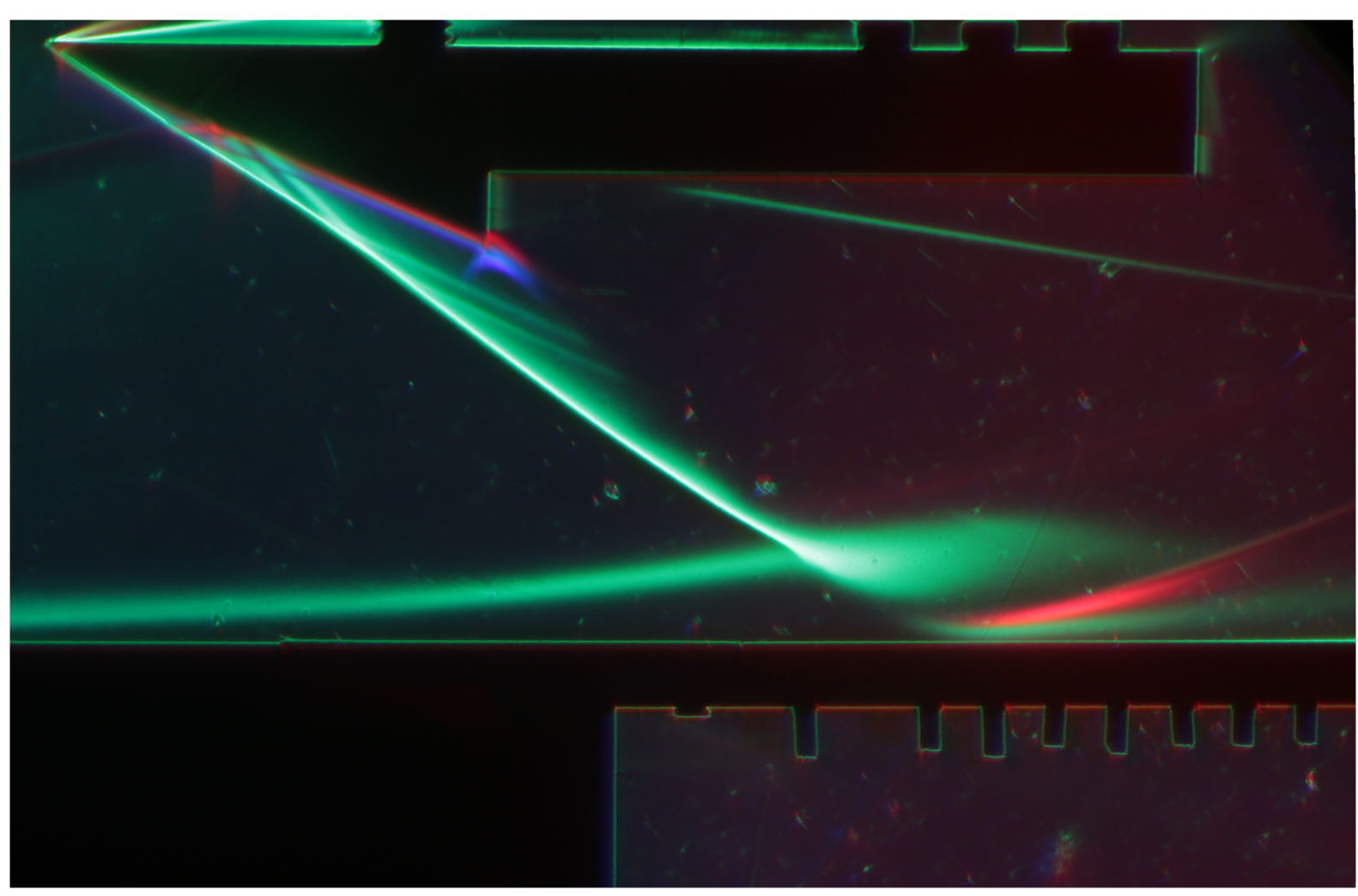
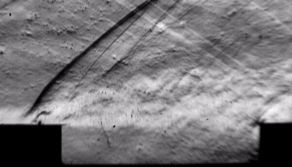
Recent Publications
1.Lo K H and Kontis K (2017) Flow characteristics of various three-dimensional rounded contour bumps in a Mach 1.3 freestream. Experimental Thermal and Fluid Science 80:228-243.
2.Ukai T, Zare-Behtash H, Kontis K and Erdem E (2017) Experimental investigation of surface flow pattern on truncated cones in Mach 5 flow: influence of truncation ratio. Experimental Thermal and Fluid Science, 81:396-405.
3.Ukai T, Zare-Behtash H, Kontis K and Obayashi S (2016) Three-Dimensional shock wave distortion in shock-square vortex loop interaction. Experimental Thermal and Fluid Science 79:85-90.
4.Gnani F, Zare-Behtash H and Kontis K (2016) Pseudo-shock waves and their interactions in high-speed intakes. Progress in Aerospace Sciences 82:36-56.
5.Russell A, Zare-Behtash H and Kontis K (2016) Joule heating flow control methods for high-speed flows. Journal of Electrostatics 80:34-68.
Cuiwei Liu
China University of Petroleum, China
Title: Computational fluid dynamic simulation of leakage acoustic waves propagation model for gas pipelines

Biography:
Cuiwei Liu is a Lecturer in Oil and Gas Storage and Transportation Engineering in China University of Petroleum. His research emphases include leak detection, location for oil and gas pipelines based on acoustic waves and dynamic pressure waves. In recent years, he has made successful researches on generation and propagation mechanism of leakage acoustic waves based on aero-acoustics and fluid dynamics. In his work published in the Journal of Loss Prevention in the Process Industries (JLPPI, 2014) he showed the acoustic generation mechanism based on the gas-solid interaction. In his work published in Computers and Fluids (CAF, 2015), he carried out computational fluid dynamic simulation of pressure perturbations generation for gas pipelines leakage. Also, he studied the propagation model of acoustic waves in the gas in the pipeline.
Abstract:
When leakage occurs for natural gas pipelines, acoustic waves generated at the leakage point will propagate to both ends of the pipe, which will be measured and processed to detect and locate the leakage. When acoustic waves propagate in the gas, the amplitude will attenuate and the waveform will spread, which decides the installation distance of acoustic sensors. Therefore, a computational fluid dynamic (CFD) simulation research on the acoustic waves propagation model is accomplished and verified by experiments to provide foundation for acoustic leak location method. The propagation model includes two parts: amplitude attenuation model and waveform spreading model. Both can be obtained by the established CFD simulation model. And the amplitude attenuation model can be verified by the experiments. Then, the simulation method is applied to conclude the propagation model under variable conditions including different flow directions, Reynolds numbers and diameters. Finally, the experimental demonstration of the leak location based on the propagation model is given. The results indicate that not only the gas viscosity but also the gas flow can influence on the propagation model and leak location method based on propagation model is effective. Conclusions can be drawn that CFD simulation on the propagation model for natural gas pipelines is an efficient way to carry out research and provide theoretical basis for acoustic leak location method application.
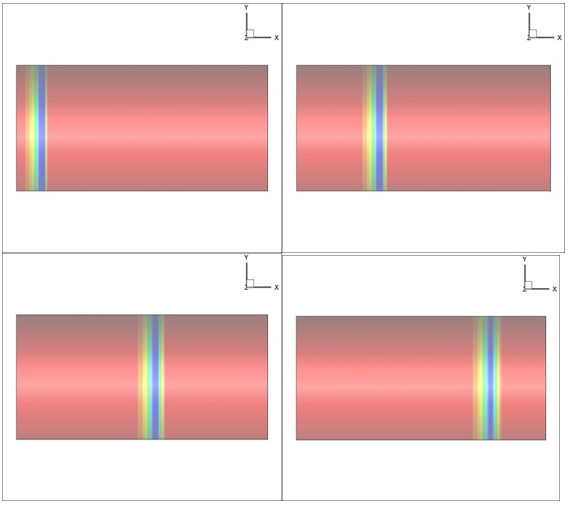
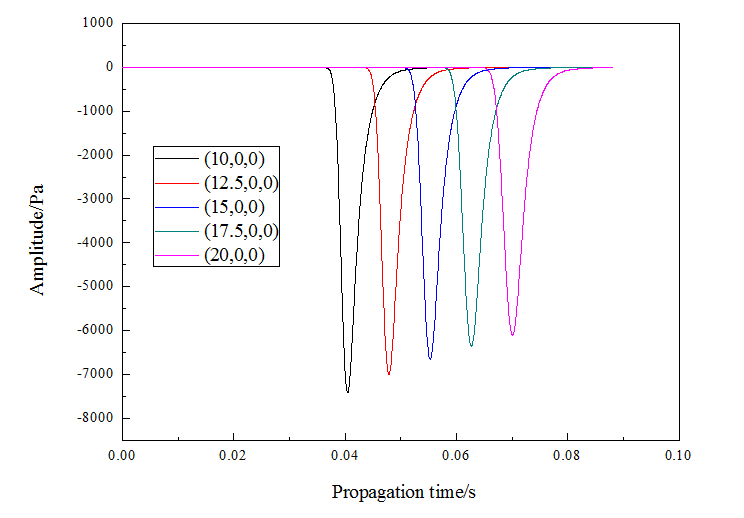
Recent Publications
1. Cuiwei Liu, Yuxing Li, Liping Fang and Minghai Xu (2017) Experimental study on a de-noising system for gas and oil pipelines based on an acoustic leak detection and location method. International Journal of Pressure Vessels & Piping, 151:20-34.
2. Cuiwei Liu, Yuxing Li, Liping Fang, Jinke Han and Minghai Xu (2017) Leakage monitoring research and design for natural gas pipelines based on dynamic pressure waves. Journal of Process Control, 50:66-76.
T Pyragiene
Center for Physical Sciences and Technology, Lithuania
Title: Anticipating of chaotic dynamics via schemes without time-delay terms

Biography:
Tatjana Pyragiene takes part in the investigation of the phenomenon of anticipating chaotic synchronization from 2008 till now. In our paper, Phys. Rev. E (2008) 78: 046217 , a new coupling scheme is proposed which solves one of the main problems of dynamics prediction - to enlarge the prediction time. In this scheme, a response system possesses a time-delay term which causes a lot of difficulties in the analysis and implementation of the method. Then, applying approximated mathematical methods, simple effective coupling schemes are constructed . They provide an approximated dynamics prediction which is good enough for many applications. For example, for neuron systems, only spikes prediction is important as is shown in our paper, Nonlinear Dyn (2013) 74:297. Recently proposed coupling schemes are described in this report.
Abstract:
One of the ways to forecast the chaotic dynamics is applying of anticipating synchronization (AS). This phenomenon appears in the configuration “drive -response” or “master - slave” where a response system anticipates the dynamics of a drive system. The most popular AS schemes contain a time-delay term in the response system which makes the system dimension infinitesimal. Therefore, analytical and experimental treatments of those schemes become complicated. To simplify the analyzing and implementation of AS schemes, algorithms without time-delay terms were proposed. In this case, the forecasting of the drive’s dynamics is not exact, but it is good enough for practical applications. In our works, we realize the regime of anticipating synchronization via introducing two schemes without time-delay terms. The first scheme consists of three chaotic systems: a master system, an intermediate slave system and a terminate slave system. The whole system periodically performs such procedures. The period is divided into three parts. In the first part of the period, the master and the intermediate systems completely synchronize. In the second part, all three systems evolve separately and the intermediate slave system accelerates. In the final third part, the intermediate and terminate slave systems synchronize. The optimal system parameters values were found analytically. Numerical simulations for the typical chaotic systems, namely for the Rössler as well for the neuron Hindmarsh-Rose system, demonstrate a stable AS regime. In our second scheme, we change a time-delay term in the classical Voss scheme by lower order all pass filter (LOAPF). The filter is constructed making use of the methods of the Padé approximation and the Laplace transform. The effectiveness of the scheme is demonstrated for an analytical spiral model and for the chaotic Rössler system. Numerical simulations show that for the filter of the second order (and higher), results coincide with the results obtained with the classical scheme with a time-delay term. The both presented schemes demonstrate that the excluding of a time-delay term simplifies both analytical and numerical investigations of the phenomenon of anticipating synchronization.
Recent Publications
1. Voss H (2000) Anticipating chaotic synchronization. Phys. Rev. E. 61(5):5115.
2. Corron N J, Blakely J N, Pethel S D (2005) Lag and anticipating synchronization without time-delay coupling. Chaos. 15(2):23110.
3. Pyragiene T, Pyragas K (2015) Anticipating synchronization in a chain of chaotic oscillators with switching parameters. Phys. Lett. A. 379(47-48):3084-3089.
4. Rossler E (1976). An equation for continuous chaos. Phys. Lett. A. 57A(5):397.
5. Hindmarsh J I, Rose R M (1984) A model of neuronal bursting using three coupled first order differential equations. Proc. R. Soc. Lond. B, Biol. Sci. 221(1222):87-92.
Suthyvann Sor
INTA, Spain
Title: Aerodynamic characterization of new filters of bioaerosol for INTA investigation aerial platforms
Time : 12:50-13:10

Biography:
Dr. SuthyvannSorMendi is an aerospace engineer and has been working at INTA since 1992. He became the head of Advanced Experimental Technique Laboratory in 2000 in the Experimental Aerodynamic Area at INTA. He has been involved in several European projects (GARTEUR AG-37, EXTICE) and National project (ACE-PCOR).He has also been involved in the NASA/INTA cooperation on Icing (2010-2016), in which he has developed his PhD on droplet deformation, and trajectory near the leading edge of an airfoil, and he has authored more than 10 papers related to Icing Physics. Currently Dr. Sor is involved in National projects (DFLOW, MEDA, MICRA) funded by the Spanish Ministries of Economy and Competitiveness.
Abstract:
Statement of the Problem: A prototype of a new filter of bioaersol particles dedicated to biology investigations has been developed. This prototype was designed to be installed on board investigation aerial platforms of INTA. The air, that contains the particles, enters the filter in the upper side. Then the air encounters a mechanical deflector that throws the air and the particles towards the side walls, where particles are collected. Additionally, a high voltage difference is created between the mechanical deflector electrode and the outer metallic plates acting as sides walls, to pull the charged particles to the side walls increasing the number of particles collected. In the down side, a cylindrical tube that has a spline hole in the down side is connected to a vacuum pump that creates a bi dimensional movement of the air. The experimental characterization of the aerodynamic flow was performed to investigate the behavior of the filter when different air intake velocities and different mechanical deflector geometries are employed.
Methodology & Theoretical Orientation: Five different impactor filters have been investigated by means of PIV measurements. The width of the filter was 100 mm and the filter span was 200 mm. The air intake velocity ranged from 9 m/s to 20 m/s.
Conclusion & Significance: Five filters have been investigated by means of PIV measurements. If the air intake width is decreased, the velocities obtained are higher for the same mass suction. However, the ratio of the horizontal velocity in the impact zone in the wall and the intake velocity decreases. Increasing the plate deflector width increases 10% the velocity between the deflector and the collector walls. However, a gradual deflector allows greater velocities and the impact of the particles in the mechanical deflector is minimum
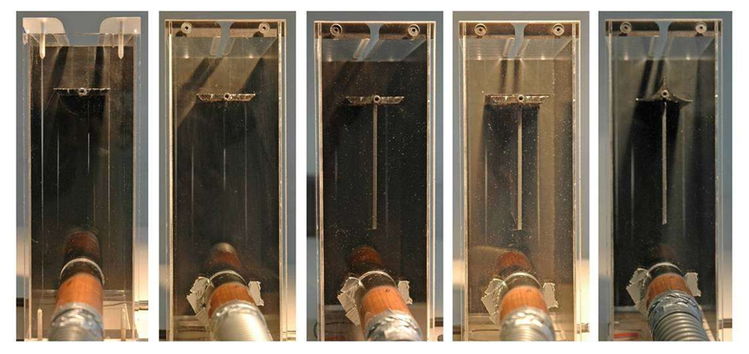
Recent Publications
1. Dechraksa J, Suwandecha T, Maliwan K, Srichana T (2014). The Comparison of Fluid Dynamics Parameters in an Andersen Cascade Impactor Equipped with and Without a Preseparator. AAPSPharmSciTech. 5(3):792-801.
2. King M D, McFarland A R (2012) Use of an Andersen Bioaerosol Sampler to Simultaneously Provide Culturable Particle and Culturable Organism Size Distributions. Aerosol Science and Technology. 46(8):852-861.
3. Meheust D, Gangneux J P, Le Cann P (2013) Comparative evaluation of three impactor samplers for measuring airborne bacteria and fungi concentrations. Journal of Occupational and Environmental Hygiene. 10:455-459.
4. Pastuszka J S, Iwasiewicz P, BrÄ…goszewska E (2013) Preliminary testing of a new bioaerosol sampler developed for the measurements of low and medium concentration levels of airborne bacteria and fungi. Environment Protection Engineering. 39(1):129-138.
5. Simon X, Bau S, Bemer D, Duquenne P (2015) Measurement of electrical charges carried by airborne bacteria laboratory-generated using a single-pass bubbling aerosolizer. Particuology. 18:179 -185.
Moise Y Koffi
Hostos Community College, USA
Title: Flow structure in the vicinity of flapping elephants’ pinnae and thermal implications

Biography:
Moise Y Koffi has his expertise in the flow induced by rotationally oscillating flat plates. His investigation model based is on Computational Fluid dynamics (CFD) simulation with Ansys Fluent examines flow parameters and local surface thermal characteristics in the vicinity of rotating devices. His experimental method using flow visualization techniques gives an illustration of fluid dynamics and nature. As he explores new techniques of cooling and locomotion based on rotationally oscillatory devices he has passion using an engineering approach to analyze biological systems.
Abstract:
The study of the flow induced by rotationally oscillating surfaces has sparked scientific interest in recent decades due to its expanding applications to several areas. However, limited experimental data on such flows are found in previous work. The current study focuses on the flow originated by the flapping of elephants’ pinnae. Due to their large size, elephants produce tremendous metabolic heat. However, how they dissipate their heat has been disputed for decades. It is hypothesized that the flapping of their pinnae is the principal thermoregulatory mechanism for elephants. The present experimental and computational work investigates the flow structure in the vicinity of a flapping elephant pinna and analyzes its impact on the animal’s heat dissipation. Two models of elephant pinnae, one flexible and one rigid were fabricated and tested in the laboratory using flow visualization techniques with smoke particles. Small size J-types thermocouples were used to monitor the surface temperature of the pinna models over flapping cycles, while a constant heat flux was applied to both sides. A 3-D computational investigation of the flow and surface thermal characteristics in the vicinity of a pinna model was carried with fluent using the dynamic mesh method. Computer simulations and flow visualization results revealed the presence of a hook-shaped vortex at the edge of the moving pinnae. The time-dependent surface temperature of the pinna reaches an asymptotic profile at steady state. A significant interaction between the vortical structures shed off the edge and the pinna’s model's boundary layer was found from the flow visualization results, which leads to heat transfer enhancement. The cooling rate of the pinna is improved by 30% for the flexible model compared to the rigid one. In conclusion, elephants flap their pinnae for thermal comfort. Recommendations are made to consider this key information in elephants’ conservation
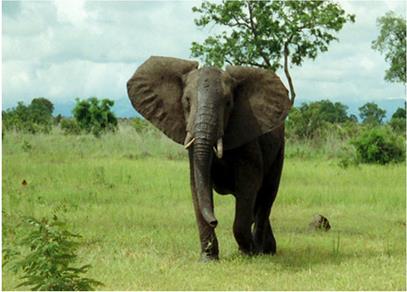
Recent Publications
1. Koffi M, Y Andreopoulos and L Jiji (2017) Heat transfer enhancement by induced vortices in the vicinity of a rotationally oscillating heated plate. International Journal of Heat and Mass Transfer 112:862-875.
2. Koffi M, Y Andreopoulos and L Jiji (2014) The role of pinnae flapping motion on elephant metabolic heat dissipation. Journal of Heat Transfer 136(10):101101.
Hyun Muk Kim
Pukyong National University, South Korea
Title: Missile-motion performance analysis of gas-steam launch system utilizing multiphase flow model and dynamic grid system
Time : 14:25-14:45

Biography:
Hyun Muk Kim is pursuing his Master's Degree from Pukyong National University in Busan, South Korea. He belongs to the Propulsion and Combustion Laboratory. He majors in Computational Fluid Dynamics, and has been conducting research on thrust performance and combustion characteristics by modeling numerical simulation of methane-oxygen bipropellant thruster as well as on gas-steam launch system.
Abstract:
A gas-steam launch is the method of ejecting a missile from a canister using gas generator rather than a propellant of the missile itself, and it has been studied in various countries. In this system, coolant is injected to the conduit and mixed with combustion gas to prevent the damage to the canister and missile caused by the hot combustion gas. The factors related to pressure build-up, such as temperature change due to an interaction of high temperature gas and coolant as well as the volume increase of a breech (Figure: 1) caused by the movement of the missile, are intertwined, making it difficult to predict the behavior of the missile ejection. In this study, thermo-fluid dynamic phenomenon in the breech was analyzed utilizing ANSYS Fluent and the motion performance of the missile was predicted. To represent the missile motion, the calculation was performed using the dynamic grid system, and DPM (Discrete Phase Model) was used to simulate a process of atomization and evaporation of liquid coolant. The realizable k-ε model was employed for turbulence modeling. Parametric study was carried out by varying the coolant flow rate with the flow rate of high temperature gas fixed, to verify the 3-D DPM numerical analysis model, the simulation results were compared with those obtained from the calculation of the one-dimensional governing equations of C T Edquist, who presented a gas dynamic model to predict the gas-steam launch process of the peacekeeper ballistic missile and compared it with experimental data with a fairly good agreement.
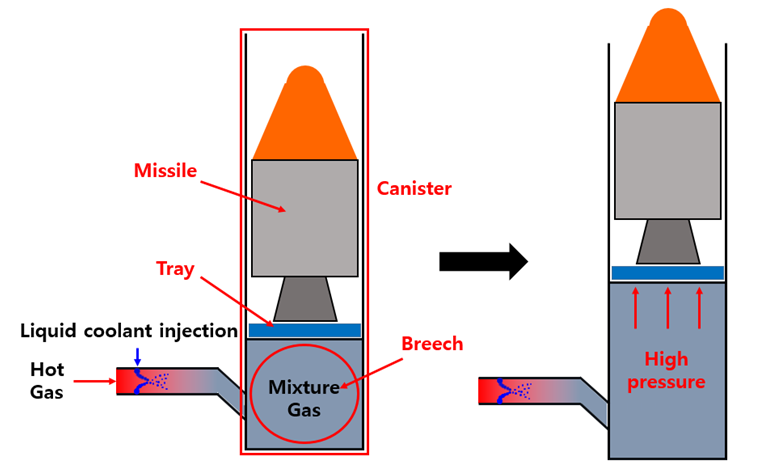
Figure 1: Scheme of canister-launched missile system.
Recent Publications
1.Jong-Ryul B (2001) Analytical study on the launching system with gas generator. Journal of the Korean society of propulsion engineers 5:3:25-59.
2.GookHyun B and Yoo-Jin Y (2005) Coolant effect gas generator propellant. Journal of the Korean society of Propulsion Engineers 9:2:1-8.
3.Yongquan L, Anmin X (2013) An interior trajectory simulation of the gas-steam missile ejection. Journal of Computers 8(5):1321-1326.
- Young Researchers Forum
Session Introduction
Lin Zheng
Beijing University of Technology, China
Title: Finite-time blow-up for the 3-D primitive equations of oceanic and atmospheric dynamics
Time : 14:45-15:00

Biography:
Abstract:
In this paper, we prove that for certain class of initial data, the corresponding solutions of the 3-D primitive equations of oceanic and atmospheric without viscosity and with periodic boundary conditions blow up in finite time. We reduce the unknown function of the three dimensional by constructing special solution and consider the restriction of the evolution of equation on the surface x=0, y=0. Furthermore, we construct a self-similar solution to solve the blow-up problem.
Recent Publications
1. C J Liu, Y G Wang and T Yang (2014) A well-posedness theory for the Prandtl equations in three space variables. Adv. Math. 308:1074--1126.
2. C. Cao,Slim,J. K. Li, E. S. Titi (2012) Finite-time blowup for the inviscid primitive equations of oceanic and atmospheric dynamics. Comm. Math. Phys. 337:473--482.
3. C. Cao,J. k. Li, E. S. Titi (2014)Global well-posedness of strong solutions to the 3D primitive equations with horizontal eddy diffusivty. JDE 257:4108--4132.
4. C. Cao, E. S. Titi (2012) Global well-posedness of the three-dimensional straified primitive equations with partial vertical mixing turbulence diffusion. Comm. Math.Phys. 310: 537--568.
5. B. Guo, D. Huang (2011) Existence of the universal attractor for the 3D viscous primitive equations of large-scale moist atmosphere. JDE. 47: 457--491.
Na Wang
Beijing University of Technology, China
Title: The boundary layer problem on the incompressible MHD system with noncharacteristic Dirichlet boundary condition for velocity
Time : 15:00-15:15

Biography:
Na Wang is mainly engaged in the study of partial differential equations of fluid mechanics, especially the study of boundary layer problems in MHD system.
Abstract:
In this paper, we study the boundary layer and vanishing viscosity-diffusion limit problem for the incompressible magneto-hydrodynamic (MHD) system, which has the non-characteristic Dirichlet boundary condition for the velocity and the perfect conducting wall boundary condition for the magnetic field. Using the multiscale analysis and asymptotic expansion approach, we can obtain the inner function equations and boundary layer equations. By solving the boundary layer equations, we find that the velocity has the low order boundary layer, and the magnetic field has the high order boundary layer. Then we use the inner functions and the boundary layer functions to construct the approximate solutions. At last, utilizing the elaborate energy methods, we can strictly prove that the solutions of the viscous and diffuse MHD system can be approximated by the approximate solutions when the viscosity and diffusion coefficient tend to zero.
Recent Publications
1.Wang S, Wang B Y, Liu C D, Wang Na (2017) Boundary layer problem and zero viscosity-diffusion limit of the incompressible magnetohydrodynamic system with no-slip boundary conditions. Journal of Differential Equation doi: 10.1016/j.jde.2017.05.025.
2.Guo B L and Wang G W (2016) Vanishing viscosity limit for the 3D magnetohydrodynamic system with generalized Navier slip boundary conditions. Mathematical Methods in the Applied Sciences 39:4526-4534.
3.Wu Z L and Wang S (2015) Zero viscosity and diffusion vanishing limit of the incompressible magnetohydrodynamic system with perfectly conducting wall. Nonlinear Analysis: Real World Applications 24:50-60.
4.Xie X Q, Luo L and Li C M (2014) Boundary layer for MHD equations with the non-characteristic boundary conditions (in Chinese). Chinese Annals of Mathematics 35A(2):171-192.
5. Xiao Y L, Xin Z P and Wu J H (2009) Vanishing viscosity limit for the 3D magnetohydrodynamic system with a slip boundary condition. Journal of Functional Analysis 257:3375-3394.

Biography:
Seyfi Girgin has a Bachelor’s degree in Mechanical Engineering and Master’s degree in Aerospace Engineering. His expertise is based on CFD models and thermal managements. He has performed this study for his Master’s thesis. He is developing his approach on this study to perform heat transfer enhancement on fighter aircrafts. He is now working in a company as a Research and Development Engineer specialized in Thermal System Design Engineering.
Abstract:
Statement of the Problem: The need of high performance of thermal systems in many engineering applications has increased. The convectional heat exchangers are generally improved by surface augmentation. There are two enhancement techniques of convective heat transfer for compact heat exchangers. One is to extend heat transfer surface area like a fin, the other is to increase heat transfer coefficient between solid surface and fluid such as using turbulators as vortex generators. The purpose of this study is to increase the intensity of secondary flow and reduce the size of wake regions in rectangular plate fin heat exchangers os as to increase to heat transfer coefficient to gain size and effectiveness. In this study, a new type of vortex generator called common flow up-common flow down and its various configurations reported.
Methodology & Theoretical Orientation: In rectangular channel, three configurations have been analyzed; common flow up, common flow down and mix type (both up and down) with 15-30-45 and 60-degree wings attack angle. The height of the vortex pair is half of the channel height.
Findings: 3D CFD results showed that 30-degree common flow up configuration provides the better heat transfer rate under the same inlet velocity and temperature. 15-45 and 60 degree increases the heat transfer rates about 26%-33% and 42% while 30-degree configuration gives 59% more heat transfer performance compared to channel without vortex generators. However, at that configuration, pressure drop penalty occurs which is about 34% more pressure drop compared to channel without vortex generators pairs. Results showed that wings attack angel play an important role in determining the heat transfer performance. In detailed results; Nusselt number, Reynolds number, pressure drop, heat transfer coefficient and corresponding vortex generator configurations are compared. Further studies can be based on the effect of length, height and placement of the vortex generators.
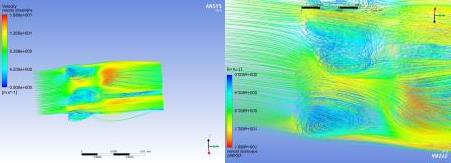
Figure 1: Velocity streamlines over 30-degree common flow up type heat exchanger
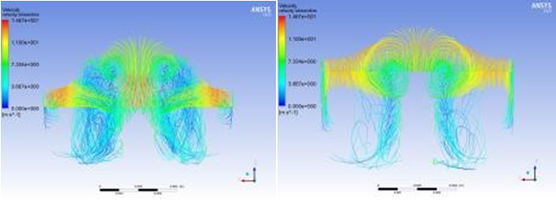
Figure 2: Velocity streamlines at z=5 and z=7 mm (30-degree common flow up)
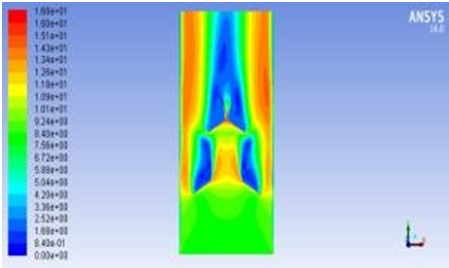
Figure 3: Velocity contours at Re=2000, 30-degree common flow type
J Alfredo Soto Ã,
University of Guanajuato, Mexico
Title: Blood flow analysis in presence of static magnetic field of 3.0 T
Biography:
J Alfredo Soto Á is a Physicist who has acquired experience in Medical Physics and its union with Computational Fluid Dynamics. He has also been in contact with MRI machines, originating interest in the interaction of magnetic fields with biofluids. Until now, he has worked only with the numerical technique of finite differences but he has a great interest in extending his research to element and finite volume.
Abstract:
Interactions with a high intensity static magnetic field (0.2 T to 3.0 T) are widespread practice in a Magnetic Resonance Imaging study, hence, it is important to know the side effects associated with such exposures. In this work, a mathematical model and its numerical treatment is presented for a physical system that describes an artery segment through which oxygenated blood flows while being exposed to a 3.0 T magnetic field. The model uses the thermodynamics theory to propose an isothermal system and the generated energy of the magnetic field. An expression for the new pressure is derived to be coupled with the Navier-Stokes equations. Given the geometry and symmetry of the physical system under analysis, as a first approximation, a rectangular cavity is used for the numerical solution of the governing equations using the finite difference method. The code of the numerical method for the rectangular cavity was validated before being coupled to the raised problem. Results suggest that given the changes established by the presence of the magnetic field in the thermodynamic system, there are modifications in the speed profile as also in the blood flow.
Recent Publications
1. E E Tzirtzilakis (2005) A mathematical model for blood flow in magnetic field. Physics of Fluids 17:077103-1.
2.C T Phua and G Lissorgues (2009) Modeling of pulsatile blood flow in a weak magnetic field. World Academic Science, Engineering and Technology 54:73-76.
3.N Rusli, E H Kasiman, A K B Hong, A Y M Yassin and N Amin (2011) Numerical computation of a two-dimensional Navier-Stokes equation using an improved finite difference method. Matematika 27(1):1-9.
4. N Rusli, A B H Kueh and E H Kasiman (2011) Staggered grid computation of fluid flow with an improved discretization of finite differencing, ICIEIS, Part III, Communication in Computer and Information System 253:82-94.
- Poster Presentations

Chair
Piergiacomo Cancelliere
Italian National Fire Rescue and Service – CNVVF – Rome, Italy
Session Introduction
Yutaro Takahashi
Akita University, Japan
Title: Power consumption of liquid atomization device by using rising film flow along a rotating cone and disk
Biography:
Abstract:
Mist is an atomized state of liquid, where many droplets are clustered and dispersed. If the mist is sprayed around and comes in contact with surrounding objects, the mist evaporates quickly and it does not wet the object. Therefore, it is used indoors as a part of such devices as a humidifier and a mist sauna. In addition, since heat absorption occurs in the process of evaporation of droplets, the mist is used outdoors as a cooling facility in buildings and parks. In a process of mist generation, it is common to use an atomization system by using several devices such as pumps, compressors, nozzles and fans. Because many devices are needed, the atomization system becomes larger and complicated. So, the system maintenance is difficult, leading to trouble and accident. Considering the above situation, Adachi et al. invented a new atomization device using a rotating cone and disk shown in Figure1. The device uses a phenomenon that liquid rises along the conical outer surface when the cone is immersed in the liquid by turning the top upside down and rotated as seen in Figure 2. In addition, the rising liquid is spread by a rotating disk, and the spread liquid is sprayed as mist indicated in Figure 3. Because any mechanically complicated parts are not immersed into the water, the device is easy to maintain. It is important to know necessary power of the atomization device. Therefore, we investigate the necessary power by varying the rotation speed of cone and mist flow rate. In addition, we aim to derive a dimensionless correlation equation using a power number Np.

Figure 1: Experimental apparatus

Figure 2: Visualization photographs of rising film flow.

Figure 3: Visualization photograph of mist flow sprayed from the disk edge.
Recent Publication
1. T Adachi, N Sato, N Kobari and T Hori (2010) Liquid film flow rising along the outer surface of the rotating cone. Heat Transfer Asian Research 39:492-496.
2. T Adachi (2013) Enhancement of oxygen dissolution using mist flow generated by a rotating cone. Japan Society of Mechanical Engineers Series B (in Japanese) 79(800):632-635.
3. T Adachi (2015) Oxygen transfer and power consumption in an aeration system. Chemical Engineering Science 126:625-632.
![]()
Satoshi Hotta
Akita University, Japan
Title: Pressure drop evaluation of heat exchanger model with disturbance promoters

Biography:
Satoshi Hotta is a Graduate School Student in Akita University. He is engaged in measurement for pressure drop characteristics in model channels of plate-type heat exchangers. The plate-type heat exchanger is used especially in a field of Ocean Thermal Energy Conversion (OTEC) system to generate power from natural resources. To achieve the development of high efficiency for the OTEC power plant, he collaborates stuffs in Institute Ocean Energy, Saga University, which is a core institute for OTEC in Japan.
Abstract:
Heat transfer technology works in various aspects such as industrial products. Especially for the plate type heat exchanger, it is highly valued in terms of high thermal efficiency and compact size, etc. It is thought that the application range of the plate type heat exchanger will further widen in the future. For this heat exchanger, a method of disturbing flow using a disturbance promoter is attracting attention as a method for increasing thermal efficiency. In this study, consider the trapezoidal groove in the disturbance promoter, and consider its performance. The visualization of the disturbance promoter in the trapezoidal groove is shown in Figure 1. The feature of this promoter is that a vortex is generated in the groove. This feature doesn’t have smooth disturbance promoter. Two things need to be considered in evaluating the disturbance promoter; first, about heat transfer, the second, about energy loss. In this study, we consider energy loss in the channel. The energy loss can be expressed by the difference in pressure drop between the two points by Bernoulli theorem. Therefore, in this study energy loss is considered by measuring pressure loss. The experiment apparatus is shown in Figure 2. The flow rate was adjusted with a valve, and the pressure drop when a constant flow rate was passed was measured. The plate pattern of the disturbance promoter was measured for 6 patterns as shown in Figure 3. As a result, it was found that there is a critical point at which the loss significantly increases in any pattern. This is a phenomenon that is expected to change the turbulent flow from laminar flow to turbulent flow. It was also found that the critical point was affected with respect to the edge part with respect to the flow direction.

Figure 1: Flow visualization
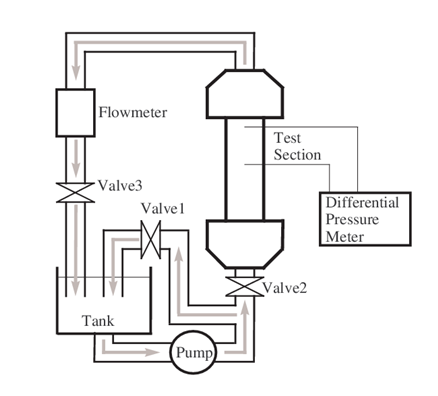
Figure 2: Experiment apparatus

Figure 3: Plate pattern
Recent Publications
1. T Adachi, Y Tashiro, H Arima and Y Ikegami (2009) Pressure drop characteristics of flow in a symmetric channel with periodically expanded grooves. Chemical Engineering Science 64:593-597.
2.T Adachi and S Hasegawa (2006) Transition of the flow in a symmetric channel with periodically expanded grooves. Chemical Engineering Science, 61:2721-2729.
3.T Adachi, Y Goshi and H Uehara (2002) Transition and pressure drop characteristics of flow in periodically combined channels. JSME International Journal Series B, 68:2232-2239.
4.T Adachi and H Uehara (2001) Correlation between heat transfer and pressure drop in channels with periodically grooved parts. International Journal of Heat and Mass Transfer 44:4333-4343.
Aleksei Greshilov
Lavrentyev Institute of Hydrodynamics of SB RAS, Russia
Title: Dynamic impact on a frozen support caused by natural and quasinatural oscillations of an ice plate

Biography:
Aleksei Greshilov graduated from Novosibirsk State University (NSU) in 2012 with a Master's Degree. Currently, he is a Junior Researcher at the Lavrentyev Institute of Hydrodynamics, SB RAS and is working on his PhD thesis on the theme of Polar Mechanics. He has publications in using the theory of long waves in shallow water and the approximation of the Euler beam vibrations was studied of the behavior of thin elastic plates.
Abstract:
Interest in the problem of ice plate oscillations is due to its wide usage in many practical applications and engineering calculations (design of floating platforms, installation of oil rigs in the polar environment, creation of airfields on ice, etc.). It should be noted that there are projects of giant floating facilities (airports and islands) based on the floating plate concept. The aim of this work is to study the behavior of an elastic plate frozen onto a vertical support and floating on the surface of an ideal incompressible fluid in the case of bounded and unbounded reservoirs and to determine the dynamic loads on the vertical support considering the unevenness of the bottom. The purpose is to consider the asymptotic behavior of natural frequencies with the endlessly increasing reservoir radius and determine the dependence of the natural oscillation frequencies of the plate on the natural oscillation frequencies of the free water surface in a closed reservoir (seiches). Here the natural and quasinatural oscillations of the elastic plate floating on the surface of an ideal incompressible fluid are considered within the linear shallow water theory.

Recent Publications
1. A G Greshilov (2017) Chladni figures of a circular plate floating in the bounded and unbounded water basins with the cantilevered central support. Journal of Applied and Industrial Mathematics 11(1):49–57.
2. A A Korobkin and T I Khabakhpasheva (2007) Construction of exact solutions of a problem concerning a floating plate. Journal of Applied Mathematics and Mechanics 71(2):321–328.
3. I V Sturova (2008) Effect of Bottom Topography on the Unsteady Behavior of an Elastic Plate Floating on Shallow Water. Journal of Applied Mathematics and Mechanics 72(4):417–426.
4.V V Alekseev, D A Indeitsev and Yu A Mochalova (2002) Vibration of a flexible plate in contact with the free surface of a heavy liquid. Technical Physics 47(5):529–534.
5. G Zilman and T Miloh (2000) Hydro-elastic buoyant circular plate in shallow water: a closed form solution. Applied Ocean Research 22:191–198.

Biography:
Luc R Pastur has expertise in Aerodynamics and Dynamical System Theory. His work on open cavity flows has covered the study of both the shear-layer self-sustained oscillations and centrifugal instabilities that may develop in the inner-flow, at lower Reynolds numbers. More recently, he started to investigate wake bi-stability of bluff bodies, in collaboration with Olivier Cadot, a phenomenon only recently discovered by the fluid dynamics community, despite its generic occurrence in almost any fluid configurations involving three-dimensional bluff bodies
Abstract:
Recent studies have shown that beyond some critical value of the ground clearance and Reynolds number, turbulent wakes past bluff bodies may undergo antisymmetric instabilities that result into the (steady) defelection of the wake in the direction of the body main shape ratio. As a consequence, additional lateral forces apply to the body, and temporally intermittent shifts from one deflected position to the symmetrical position are most usually observed. This resulting pitchfork bifurcation can be imperfect, when the yaw angle is non-vanishing. For moderate yaw angles, the wake can be blocked into one of the two allowed deflected positions. The lifetime of the wake, in a given deflected position, is larger by orders of magnitude than the characteristic vortex shedding time. Lifetime distributions follow Poisson-like probability laws, indicating a memory-less process. In this presentation, we propose to review the main results we gathered from several campaigns of measurements on flat backed 3D bluff bodies bluff bodies, over the last five years. We show that this phenomenon is quite generic, as it is observed, with slightly different features, in the wake of axisymmetric bluff bodies and even of spheres. We conclude with perspectives in flow control.
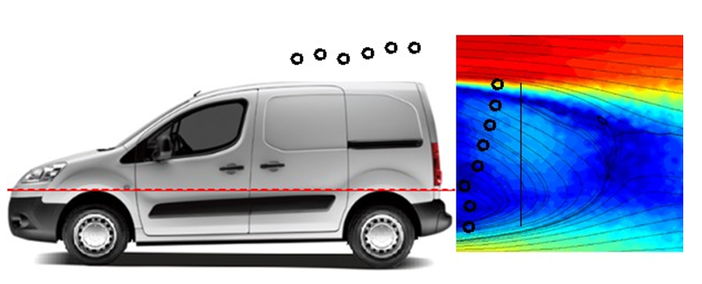
Figure 1: mean flow field (color map and streamlines) in the wake and pressure distribution (open dots) at the rear and top of a commercial car.
Recent Publications
1. M Grandemange, O Cadot, M Gohlke (2012) Reflectional symmetry breaking of the separated flow over three-dimensional bluff bodies. Physical Review E. 86(3):035302.
2. M Grandemange, M Gohlke O. Cadot (2013) Turbulent wake past a three-dimensional blunt body. Part 1. Global modes and bi- stability. Journal of Fluid Mechanics. 722:51:84.
3. M Grandemange, M. Gohlke, O. Cadot (2014) Turbulent wake past a three-dimensional blunt body. Part 2. Experimental sensitivity analysis. 752:439-461.
4. A Evrard, O Cadot, L R Pastur (2015) Imperfect supercritical bifurcation in a three-dimensional turbulent wake. Physical Review E. 91(6):063005.
- Video Presentation
Chair
R S Srivastava
Defence Science Centre, India
Biography:
R S Srivastava has been working in the field of Fluid Mechanics for a considerable period of time. He has by now published more than 70 research papers on flow through curved tubes, shock wave diffraction, heat transfer, flow through rotating pipes and non-Newtonian fluids. His work has received international recognition and has been referred widely and profusely in international journals and books by very eminent persons in the area. His work on flow through curved pipes has found application in most of the disciplines in Science, Engineering and Medicine. His prediction of position of maximum axial velocity in curved pipes for different parameters of Mc Conalogue has tallied extremely well with ultrasound measurements. He has written two books: i) “Turbulence (Pipe Flows)” ii) “Interaction of Shock Waves”. He has worked with Prof. Sir James Lighthill, F R S, Prof. I I Glass and Prof. Akira Sakurai at Imperial College, London, Institute for Aerospace Studies, Toronto, Tokyo Denki University, Tokyo, respectively. He has delivered several lectures at many international symposia.
Abstract:
Lighthill (1949) investigated the diffraction of normal shock wave past a bend of small angle d. He used small perturbation theory to linearize the problem and solved the problem through Busemann transformation and complex variable technique. He obtained pressure distribution over the wall for several Mach numbers of the shock wave. Lighthill’s theoretical results were tested experimentally (1950). Sakurai and Takayama (2005) extended the theory of Lighthill to larger d through singular perturbation theory. Shock diffraction phenomenon provides insight into vortex development and vortex shock interaction whose applications include noise control, propulsion or wing aerodynamics. In relation to this Srivastava (2013) predicted vorticity distribution over diffracted shock both from Lighthill’s theory and Sakurai and Takayama’s theory. Srivastava (1968) developed the theory of diffraction of oblique shock waves (consisting of incident and reflected shock waves) analogous to the theory of Lighthill. Srivastava gave the pressure distribution over the wall surface when the relative outflow behind the reflected shock wave before diffraction is subsonic and sonic. Subequently Srivastava and Chopra (1970) obtained the pressure distribution on the wall when the relative outflow behind the reflected shock wave before diffraction is supersonic. The results of Srivastava and Chopra (1970) were tested experimentally at the Institute of Aerospace studies, University of Toronto, Canada by Srivastava and Deshambault (1984). The results were found to be extremely satisfactory. More work on this subject has been carried out by Liet et al (1994) and by Heilig (1995, 1996), at the Ernst Mach Institute, Germany.
Recent Publications
1. Lighthill MJ (1949) The diffraction of blast-1. Proc. Roy. Soc. A. 198: 454-470.
2. Fletcher CH, Weimer DK and Bleakney W (1950) Pressure behind a shock wave diffracted through a small angle. Physical Review 78(5): 634-635.
3. Sakurai A, Takayama F (2005) Analytical solution of a flow field for weak Mach reflection over a plane surface. Shock Waves. 14: 225-230.
4. Srivastava RS (2013) On the vorticity distribution over a normal diffracted shock for small and large bends. Shock Waves 23(5): 525-528.
5. Srivastava RS (1968) Diffraction of blast wave for the oblique case. British Aeronautical Research Council. Current Paper No. 1008 (Ministry of Aviation).

































